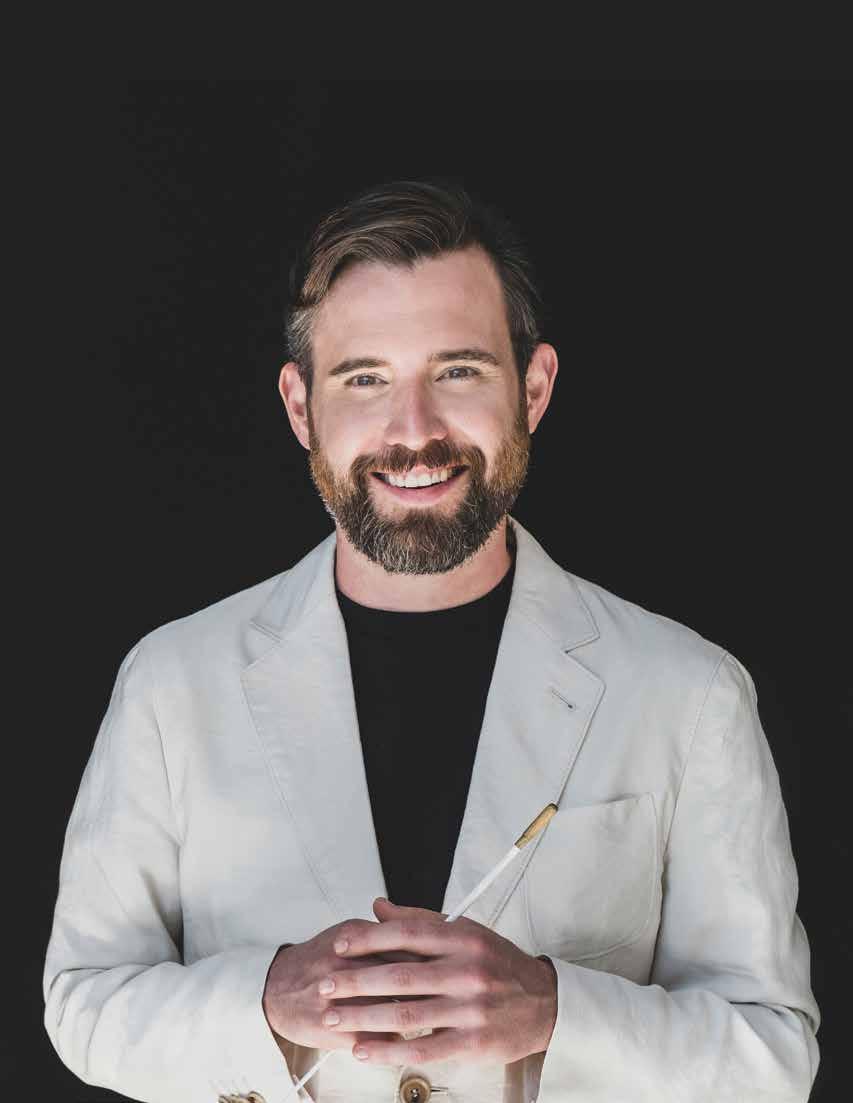

Honoring a Legacy of Excellence

Seraphic Fire presents the highest quality performances of historically significant and under-performed music and advances art through the professional development, refinement, and documentation of our musicians’ talents while promoting community connectivity through educational programs.
“I heard about Seraphic Fire when I was serving as President and CEO of the Grand Rapids Symphony. As a lifelong singer, I had long been anxious to hear the ensemble live given its stellar reputation for supreme music-making. My husband and I bought tickets to hear Seraphic Fire perform works by American composers. Unfortunately, the morning of the concert, we received the devastating news that my husband’s mother had passed away. We thought about skipping the concert, but decided to attend, craving the peace and solitude in a heavenly musical setting before we had to step back into earthly reality.
Since then, we have attended concerts each season, always uplifted by the glory and ethereal beauty that Seraphic Fire offers. My favorite concert has been the December 2024 holiday concert. The dark evening, candles and twinkling lights converged with the musical splendor of Seraphic Fire to create an indelible and unique holiday experience.” Mary T., Patron
Letter from the Executive Director
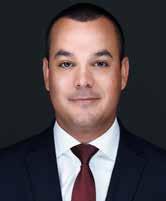
To our supporters and friends,
As we begin Seraphic Fire’s 2025–26 Season, I want to thank you for being part of our community and for supporting this extraordinary ensemble. This fall also marks my first anniversary as Executive Director, and I could not be more grateful to be part of such a dedicated organization that brings people together through music. I also want to take a moment to thank Patrick for his leadership and vision. His artistry has shaped Seraphic Fire in countless ways, and it is a privilege to carry forward the foundation he helped to build.
This season promises to be full of inspiration and discovery. You will hear beloved works that reflect the heart of Seraphic Fire alongside programs that highlight the diversity and richness of choral music. From the complete Bach Motets to the joy and nostalgia of ’Twas the Night Before Christmas, to the energy of gospel and the honesty of American folk traditions, every concert has been designed to lift spirits and deepen connections. The season will also feature unique experiences such as candlelit performances inspired by nature and an immersive finale in which music surrounds the audience.
Beyond our performances in churches throughout South Florida, Seraphic Fire is committed to nurturing the next generation of musicians through our education programs. From workshops in local schools to the High School Professional Choral Institute, we are proud to mentor young singers and provide opportunities for them to grow through direct engagement with professional artists. These initiatives are central to our mission and reflect our belief that music has the power to change lives.
On a personal note, I am eager to see familiar faces and meet new ones this year. There is nothing quite like watching an audience experience the magic of Seraphic Fire, and I look forward to sharing that joy with you.
None of this work is possible without you. Your generosity and enthusiasm sustain our mission of presenting world-class performances, providing transformative education programs, and building community through music. Please consider making a gift to our annual fund by visiting seraphicfire.org/support or by calling (305) 285-9060. Every contribution, large or small, helps us continue this important work.
I look forward to seeing many of you throughout the season. Please feel free to stop me after a concert and say hello. I would be glad to meet you and hear your impressions. Most of all, I hope you enjoy the wonderful season of music we have prepared for you.
With gratitude and warmest wishes,

Danny M. Yanez, Ed.D., CFRE Executive Director
Letter from the Artistic Director
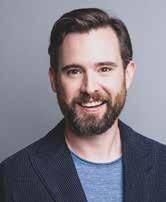
Dear Friends,
When people ask me about my favorite Seraphic Fire moment, my answer has always been the same: our next concert. That spirit has defined Seraphic Fire from the very beginning— an ensemble always reaching forward, always eager for what comes next.
When Seraphic Fire began, none of us could have imagined the journey ahead. Over the past 23 years, this ensemble has grown into a community of artists, audiences, and supporters who believe in the power of music to shape lives. Together we have weathered challenges, embraced new ideas, and built a tradition of artistry and versatility that spans more than a thousand years of music in every season.
Eighteen months ago, when we began conceiving this season, the outlook was uncertain. State arts funding had been drastically reduced, we were without a permanent executive director, and we were preparing to launch a new and untested “Music History 101” initiative with guest scholars and conductors from around the country. We had no idea how it would unfold. In that context, we planned a “Best of Seraphic Fire” season—a chance to look ahead with confidence and to choose music that we knew would embody the very heart of what this ensemble does best.
Since then, much has changed. Last season, we welcomed Danny Yanez as our Executive Director, we closed the year with a financial surplus, and we began thinking more creatively about Seraphic Fire’s future. Out of that reflection came a personal realization for me: that it was time for this organization to write its next chapter with new artistic leadership. This is not an end, but a natural and joyful step forward—the inevitable continuation of the story we began together more than two decades ago.
This year’s programs return to the repertoire that has defined us: Bach’s six motets, Monteverdi’s masterpieces, folk and gospel traditions, chant and contemporary commissions. Seraphic Fire has always thrived on this balance—drawing strength from the breadth of music we perform and the people who bring it to life.
As we look toward the future, I am deeply glad that the organization has chosen one of our own, James K. Bass, to step into the role of Artistic Director. James has been part of Seraphic Fire since the beginning, serving as singer, chorus master, conductor, and colleague. His artistry and leadership embody the best of who we are, and his vision will guide Seraphic Fire into its next chapter with both continuity and creativity.
For me, this moment is bittersweet. Seraphic Fire has been my artistic home, my teacher, and my family for more than two decades. Every lesson I’ve learned about making music, about leading, about building community—I learned here, with you. To have been entrusted with this role has been the great honor of my life.
And now, together, we turn the page. Thank you for being part of this journey, and I look forward to joining you at our next—and favorite—concert.
With gratitude,

Patrick Dupre Quigley Artistic Director & Co-Founder
Board Member Reflections
Joanne Schulte, Founding Chair
When I first met Patrick fresh out of Yale, I never imagined the next 23 years of my life would be so enriched. His vision for a fully professional choir brought thrilling performances, stellar reviews, Grammy nominations, and unforgettable education concerts. As one reviewer wrote, “Leave it to Patrick Dupre Quigley to provide more genuine musical diversity in 70 minutes than most organizations offer in a decade."
Diane Ashley, Chair
Patrick is a friend, scholar, conductor, and passionate musician. I have seen his generosity, his love of education, and his perfectionism for the art that leaves audiences in tears. It has been an honor to work alongside him, and I look forward to being in his audiences for years to come.
Bob Brinker, Treasurer, and Nancy Fleischman
We discovered Seraphic Fire in 2009 and quickly became devoted to its artistry. Patrick is fascinating to talk with, deeply knowledgeable, and genuinely interested in what others think. We are grateful he will continue as Artistic Director Laureate, guiding the selection and presentation of Seraphic Fire’s music.
Misty Bermudez, Secretary
Patrick has built his reputation as a conductor who inspires the highest artistry. His rehearsals are efficient, his musical insight profound, and his respect for singers unwavering. His dedication has elevated Seraphic Fire into one of the premier professional vocal ensembles of our time.
“I am drawn to the sound of Seraphic Fire; it’s the purity and perfection of the voices. This is a unique artistic group re-creating music in a way you have not heard it before. They sound like 100 people but only one voice. There’s not any person that’s even one wavelength out of pitch. This music forces your mind to slow down and listen, creating a sanctuary for your emotions. You don’t have to know the words, you can feel what they are saying.
The music represents a reflection and slice of history that we take for granted. In the past, live music was a luxury. We need to keep this music alive and well because it is an important part of our history. Music tells a story in a way that nothing else can.”
Steven Evans, Owner and Publisher, OutClique
Artist Roster
As of September 23, 2025
Soprano


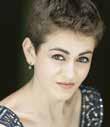
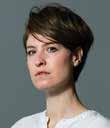

Elisse Albian
Brooklyn, NY
7 Seasons
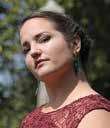
Jessica Beebe
Philadelphia, PA 4 Seasons

Amy Broadbent
Washington, DC
2 Seasons

Chelsea Helm
Washington, DC 9 Seasons
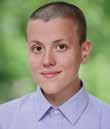
Michele Kennedy
Portland, ME
3 Seasons

Anika Kildegard
Philadelphia, PA 1 Season
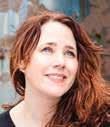
Gitanjali Mathur Austin, TX 14 Seasons

Eliza Masewicz
New York, NY 1 Season

Elijah McCormack
New Haven, CT 4

Rebecca Myers
Molly Quinn
Cambridge, UK 15 Seasons
PA

“I LOVE going to Seraphic Fire concerts! It’s like a carved-out time filled with beauty and reverie. I was introduced to Seraphic Fire about 7 years ago by an artist friend. I was immediately mesmerized! Now I am a subscriber. Ultimately, I decided that this was something that I felt was very important to support if I wanted to be able to continue to enjoy it.”
Kristina B., Patron


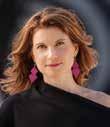


Luthien Brackett
London, UK
12 Seasons
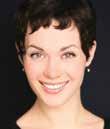
Alexandra Colaizzi
Miami, FL
6 Seasons

Amanda Crider
Miami, FL
16 Seasons

Doug Dodson
Atlanta, GA
12 Seasons

Kimberly Leeds
Boston, MA
7 Seasons
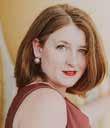
Emily Marvosh
Boston, MA
11 Seasons

Karen Neal Miami, FL
6 Seasons

Emily Skilling
Wilmington, NC
1 Season

Gabriela Estephanie Solís
Philadelphia, PA
5 Seasons

Elisa Sutherland
New York City, NY
7 Seasons

“Probably my favorite piece in Seraphic Fire’s repertoire is Samuel Coleridge-Taylor’s Sea Drift and fortunately that is a piece that has returned for more than one program that I’ve gotten to be a part of over the years. You might be asking, “why does a baroque cellist like a romantic a cappella piece from 1908?” but it’s an incredibly moving text with moody, lush harmonies. As an instrumentalist, I get to sit on stage with the choir surrounding me and listen to them sing it night after night. It’s some of the best choral singing I hear live, and I love being in the middle of it!”
Sarah Stone, Seraphic Fire, Cello and Gamba

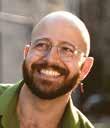
Indianapolis, IN
5 Seasons
Steven Bradshaw
Philadelphia, PA
13 Seasons Aaron Cates
Washington, DC
5 Seasons
Derek Chester Fort Collins, CO 11 Seasons
Brad Diamond Birmingham, AL
14 Seasons
Andrew Fuchs
New York, NY
6 Seasons Haitham Haidar
Montréal, QC 3 Seasons Blake Beckemeyer
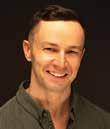


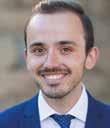

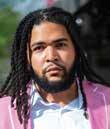

Matthew Hill Washington, DC 1 Season
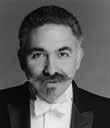
Michael Jones
Los Angeles, CA 4 Seasons
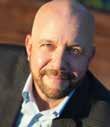
Patrick Kilbride Reston, VA 4 Seasons
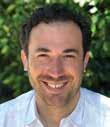
Nickolas Karageorgiou Brooklyn, NY 7 Seasons

Gene Stenger New Haven, CT 1 Season David Pelino
Kansas City, MO 3 Seasons

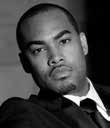
Eric Alatorre San Francisco, CA
7 Seasons James K. Bass
Los Angeles, CA 23


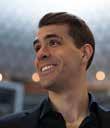
Alejandro De Los Santos Dover, NJ 1
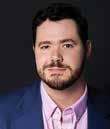
Steven Eddy Collingswood, NJ 10 Seasons
Charles Wesley Evans 10 Seasons Macon, GA


James Reese Philadelphia, PA 9 Seasons

“There have been so many wonderful memories over my many seasons singing with Seraphic Fire. In January 2018, we performed David Lang’s Pulitzer Prize winning piece The Little Match Girl Passion. It was the first time I had gotten to perform this incredible piece of music, and the alto line is featured throughout the piece as the storyteller of this young girl’s tragic life. I remember the work that went into seamlessly blending with my alto section mates, Doug Dodson and Clara Osowski, and how satisfying it was. I also sang the solo in the movement, “When it is time for me to go,” where you can hear the musical shiver in the way David Lang wrote the music of the little girl standing in the cold and freezing. It’s such a powerful and emotional moment to be able to convey the story with my voice. Many of my favorite moments also come from listening to my outstanding colleagues shine in their solo moments—Charles Wesley Evans in The Battle Hymn of the Republic in 2016, Rebecca Myers in Rameau’s aria Tristes, apprěts in 2023, and Jacob Perry in Bach’s aria Meine Seele wartet auf den Herrn in 2023 all stand out in my memory.”
Amanda Crider, Seraphic Fire, Mezzo Soprano
Violin


Viola
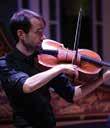
Edson
Scheid
Concert Master
New York, NY
Cell0
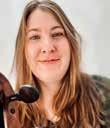
Katie Hyun
New York, NY
Bass
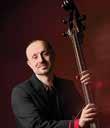
Kyle Miller
Cliffside Park, NJ
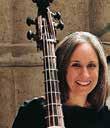
Sarah Stone
Queens, NY
Harpsichord
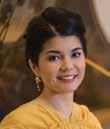
Organ
Nathaniel Chase
New York, NY

Jessica Powell
Eig
Chevy Chase, MD
Piano

Aya Hamada
New York, NY
Leon Schelhase Philadelphia, PA
Russel Paul Baltimore, MD
Seraphic Fire: Exploring Ways to Be the Best at What We Do
BY JAMES K. BASS
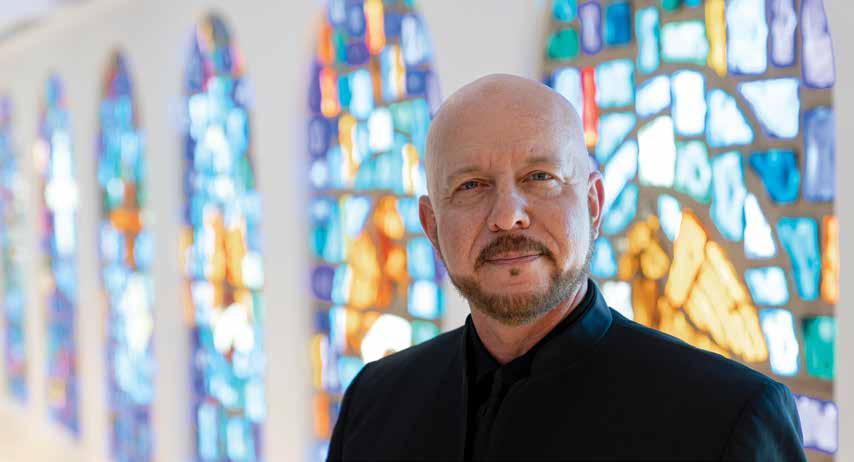
At first, back in 2002, the birth of Seraphic Fire was an attempt to fill an obvious musical void in Miami. There were these great choral works that have existed for hundreds of years but no institution to perform them in Miami. There wasn’t a group that could expertly execute them at the level needed to really experience the quality of the composer’s work. So Seraphic Fire first started as, “We're going to bring this artistry to South Florida to give it a local home and share this music with OUR community.”
Seraphic Fire grew, and the audiences became more familiar with this style of music. We took the opportunity to perform some of those historical favorites, but then our dialogue changed: “Well, wait a minute. We have

the skillsets here to perform at a higher level and challenge ourselves.” That's when Seraphic Fire began to commission works and to create relationships with some of the best composers in the world. Now, we have this widely recognized and highly skilled performing ensemble here in Miami, and we have the credibility to say: “bring something to us.” One of the first opportunities we seized upon was a large-scale work by Shawn Crouch, who's now on the faculty at University of Miami, called The Road to Hiroshima. Seraphic Fire, within a few short years, started to marry the tradition of historical choral music to the voices of today. I don't think that was part of the original plan, but it blossomed, and our
James K. Bass
singers had the skills and ability to make aural and emotional alchemy. Today, some of the pieces that we've commissioned, like The Hope of Loving by Jake Runestad, are now pieces that are standard repertoire with choirs around the world.
There has been magic in our existence. Seraphic Fire has been creating music that 100 years from now people will say is historical music. Still, we wanted to become even more interesting and more specific, so we tailored our programs with music that people had never heard, music of a particular region like Venice, Italy, or music of a particular genre like American music of the 1950s and ‘60s. We were able to get essentially surgical with our programming because we have these amazing singers with the ability to execute at extremely high levels.
When we finish a performance, it is the Seraphic Fire tradition that we step out of the hall and meet the audience. We get to hear their very fresh reactions in real time. When they hear this music performed live, they often comment that they find it incredulous. It's just impossible. How are these people singing this? It's a little bit like seeing a magician or going to the circus. How was that done? My favorite is when we perform something that they've never heard—a new or an obscure piece —and I'll get this comment: ‘Well, when I saw it on the program, James, I thought, there's no way I'm going to

HONORING a LEGACY of Excellence
like this. But wow, that was my favorite thing on the program.’ And I love it because it’s Seraphic Fire’s way of growing the ears and the hearts of the listeners. I think, on some level, that's our job.
Sometimes, we perform pieces that don’t turn out to be favorites and often we don't do those pieces again. When you go to Messiah, you know what that piece sounds like. You're anticipating getting a similar feeling that you had before. But when we're able to put a new piece on our program, and people experience it for the first time, it truly is a magical experience. We give them an opportunity for an adventure on every program with something they've never heard. People want to see something that they cannot normally see or do, and they don't want to go see the average or the mundane…they want to see Evel Knievel.
Although our concerts often contain pieces that people have done 1000s of times, to hear it flawlessly executed live by 13 people in real time with nothing plugged in is always a bit of Evel Knievel. That's the magic I always want to capture no matter what the piece is. How do you hold that note like that? How do you all end on that rhythm exactly the same way? That’s the little bit of the magic that people come for. You can hear another choir sing that same piece, and you're like, ‘Yeah, I didn't get the same feeling.’ But when you hear it done really well, there is magic, no doubt.
2 0 0 2
► Founded by Patrick Dupre Quigley and Joanne N. Schulte.
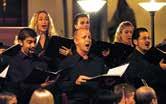
2 0 0
4
► Patrick Dupre Quigley, recipient of the 2004 Robert Shaw Fellowship, given by the National Endowment for the Arts and Chorus America to one conductor between the ages of 25 and 40 who demonstrates the potential for a significant professional career. At 26, Mr. Quigley was the youngest person to ever receive the award.
Building “The Best of Seraphic Fire”
BY JAMES K. BASS
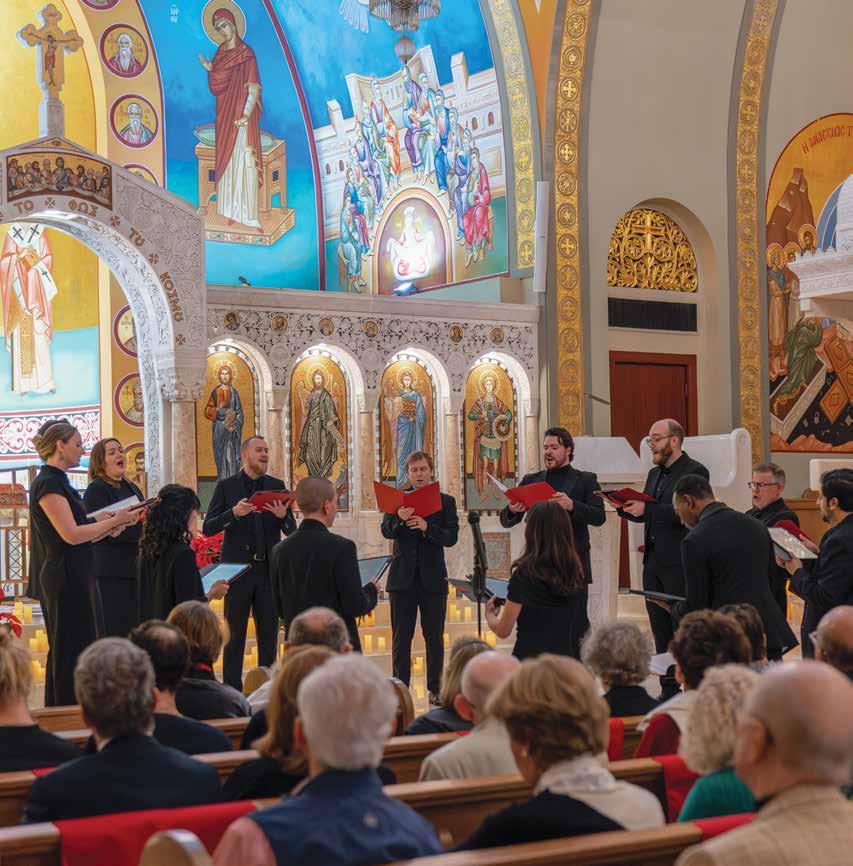

► Beginnings CD released.
► Seraphic Fire appears in Miami Herald’s end-of-year top ten concert listings for the first time. 2 0 0 5
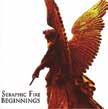
► Featured on the opening track of international pop-star Shakira’s album Oral Fixation II, which topped the charts and ultimately went platinum.
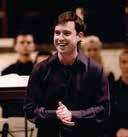
► Praised by The South Florida Sun Sentinel as “Not only one of the finest music ensembles in South Florida, but also one of the most adventurous.”
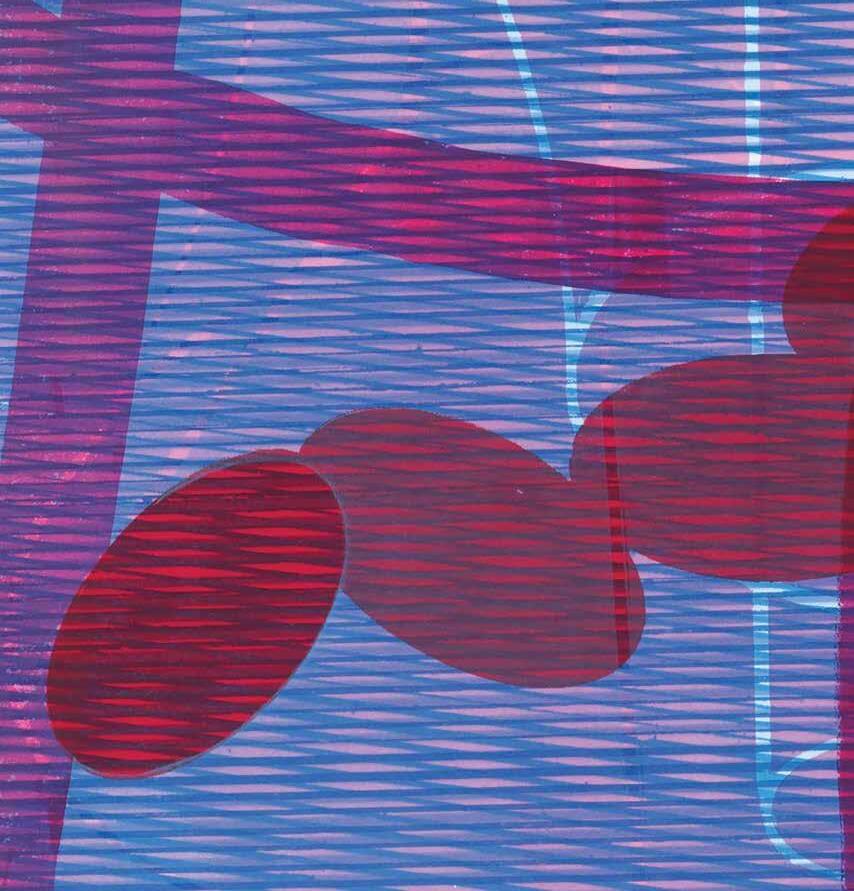
This year’s theme is The Best of Seraphic Fire. Since its very beginning, Seraphic Fire has been lauded for its adventurous and probing programming. Now that we've been around for almost 23 years, I have realized that there's an entirely different group of people who've met us only in the past decade. This audience did not experience the music that originally made us who we are, and it was a good time to provide a retrospective. When you hear Seraphic Fire perform, you don't say that “sounds” like Seraphic Fire, you say that “music” sounds like Seraphic Fire. We really try to create an authentic representation of the music in everything that we perform. This year, I think we will get a chance to show off the breadth of what we do in some of the most stunning repertoire across our history. That includes music from 900 AD to now.
What a great way to kick off our 23rd season—come and experience the music that Seraphic Fire really owns and that shaped our international reputation for artistic excellence. This program represents almost all the musical periods that Seraphic Fire lives in: Baroque, Renaissance, modern, and brand new music. We have a wonderful track record of pieces that we've recorded and performed that just feel inherently like Seraphic Fire. The experience of a live Seraphic Fire performance is mesmerizing.
Seraphic Fire, at its core, is an a cappella ensemble. That's how we started…with just 13 voices in a great space. It really is a sound that audiences have found spectacular— to walk into a quiet room, no instruments, no microphones, and then the unbelievable sounds just happen. Our program in October is composed of pieces that explore
2 0 0 6
► Awarded the 2006 ASCAP/Chorus America/Alice Parker award for adventurous programming.

that a cappella sound produced by highly trained singers. Pair that sound with an outstanding composition that has a musical arc and message, and our audience can expect an unbelievably profound aural experience.
After 23 years, there was a lot to choose from to find the absolute best…and it was certainly tough to select just a few. I revisited all our recordings, listening to them again with a mature ear. There are certain pieces that just jumped out—‘wow, that is so moving, or is so, so beautiful. It sounds as good as it can sound.’
We're going to begin the program with a historic American piece that has a critical association with Seraphic Fire. It's by William Billings, a very early American choral composer born in 1746. He wrote a short anthem called Invocation, which to
► International music magazine Gramophone calls SF “One of the most exciting and unexpected developments on the local scene… No group programmes more adventurously.”
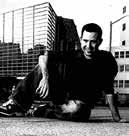
— Patrick Dupre Quigley
the modern ear sounds like simple church music. The text of Invocation says, “Majestic God, our muse inspire and fill us with Seraphic Fire, augment our swells, our tones refine, performance ours, the glory Thine.” This is a piece that Patrick was really drawn to, and that's where our name comes from. We can't do ‘the best of’ without how we got our name! From there, we will immediately present a piece by Jake Runestad that we performed for several years and recorded, called I will lift mine eyes. My goal is that in the first seven minutes of the program, audience members will hear two American composers separated roughly by 250 years. That illustrates what Seraphic Fire can do so eloquently.
I have two personal favorites on the program. One comes from the Renaissance tradition, and it's a piece that Seraphic Fire has performed several times and has even recorded.
► Bach's Six Motets CD released.
► Seraphic Fire makes its operatic debut in Purcell’s Dido and Aeneas starring Kellie van Horn and David McFerrin. 2 0 0 7
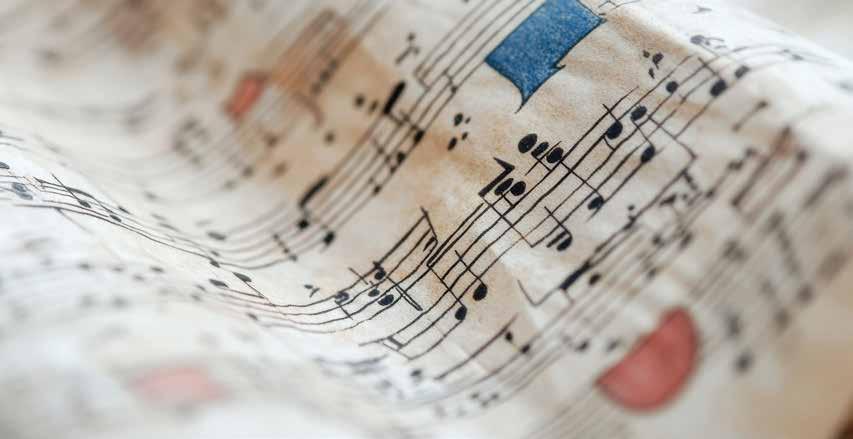
Tomas Luis de Victoria, the great Spanish Renaissance composer, set the text Salva Regina for eight voice parts—it’s just an unbelievable piece, just exquisite in every detail. It’s a Marian hymn and the text “Hail Holy Queen” is also the final prayer of the Rosary. Another favorite of mine is a piece that we recorded on the album entitled Reincarnations. One exquisite movement of music from American composer Samuel Barber is a work called The Coolin. The music is gentle, lilting, and nostalgic. A “coolin” is the little curl on the back of a girl’s neck and came to mean
‘sweetheart.’ The Irish poem is about the author who is in love, and he's saying, “Come with me. Walk with me here,” celebrating the delights of love in the great outdoors. The music captures this little, intimate moment in time so compellingly.
Invocation is from our very first year and on our very first recording called Seraphic Fire. However, this program also includes chant from the music of Hildegard von Bingen as well as a beautiful set of spirituals. It will be exciting to see what pieces get added to the “Best
of Seraphic Fire” program after our patrons vote on their favorites. Currently, leading by a wide margin, Alleluia by Randall Thompson appears to be the winner, followed by Maurice Duraflé’s Ubi Caritas, Misere by Gregorio Allegri, and Sicut Cervus by Giovanni Pierluigi da Palestrina.
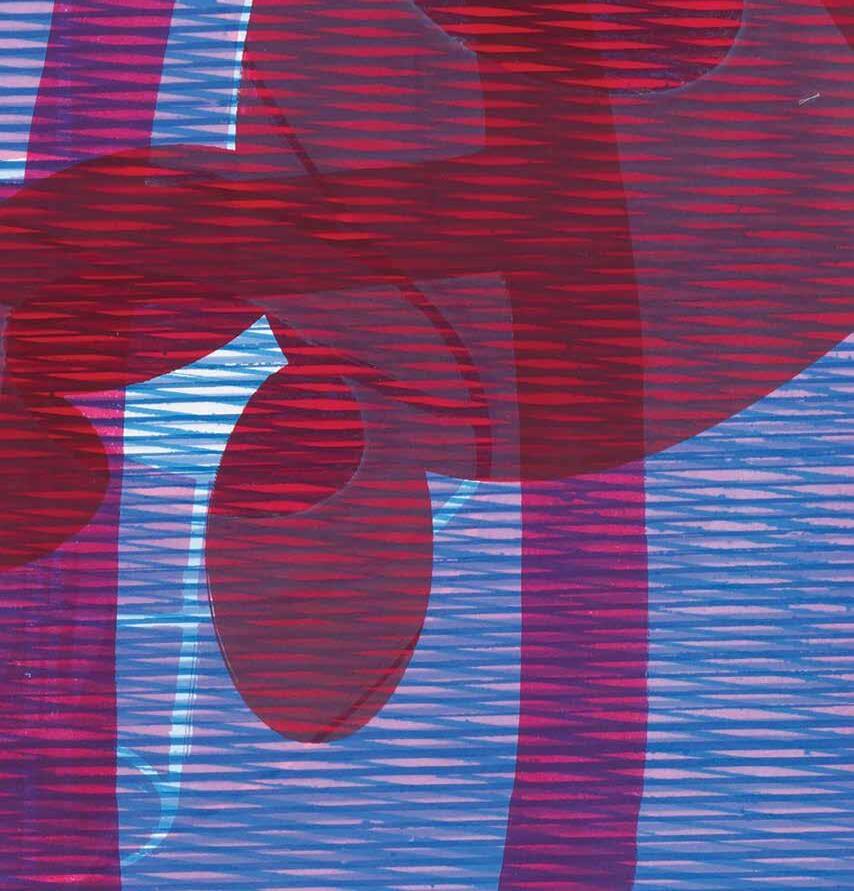
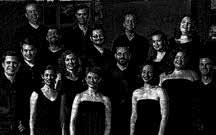
► Shalom Pax and Amazing Grace CDs released. 2 0 0 8


► Miami Herald article reports “conductor’s zest for risk wins him fans.”
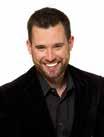
Notoriously Difficult, Bach’s Motets Delight Audiences with their Complex Artistry
BY BETH BRASWELL


► Launch of The Miami Choral Academy—The program was created in response to a troubling decline in choral singing opportunities for children. Its primary goal was to inspire low-income youth to participate in the arts within a formal, structured environment that engaged both students and their families while encouraging academic growth. The Miami Choral Project developed a replicable curriculum and structure for a system of youth choirs in collaboration with Miami-Dade County Public Schools. 2 0 0 9
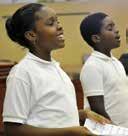
► Seraphic Fire launches its first-ever Seraphic Fire Summer Season.
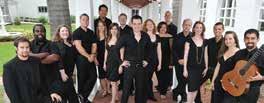
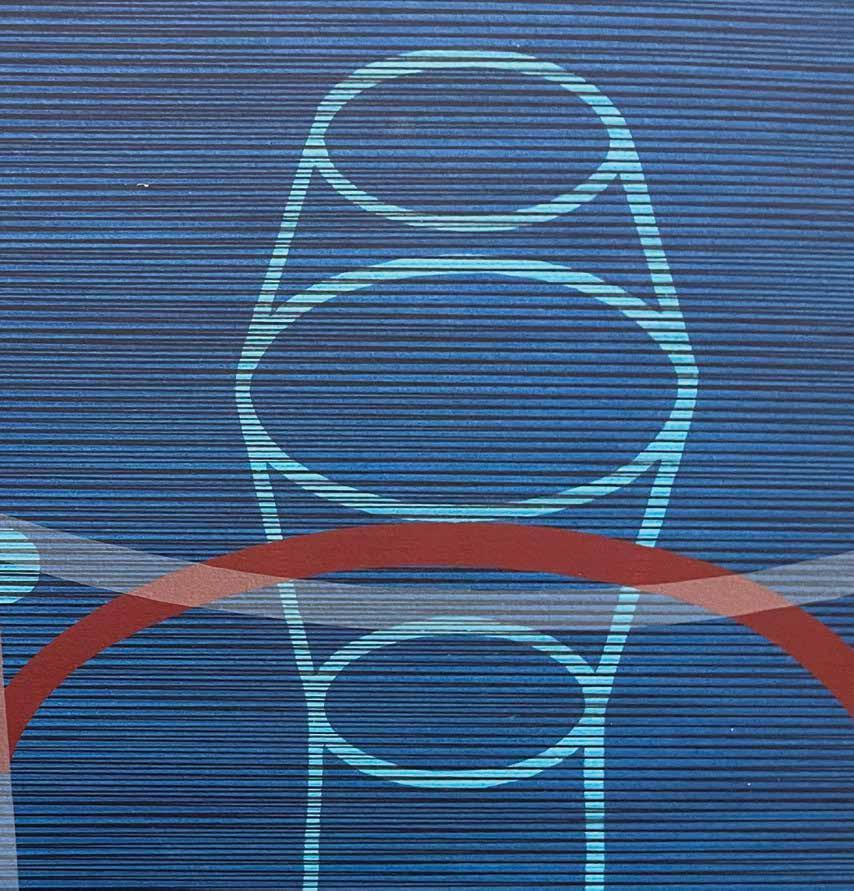
Bach’s six motets are among the most challenging and rewarding works in the choral repertoire. For Seraphic Fire, they are also foundational—music the ensemble has returned to again and again, shaping its approach to Bach and defining its sound over more than two decades.
This November will mark only the third time Seraphic Fire has presented the complete cycle of motets in its 23-year history. Yet the group has performed individual motets countless times, from the earliest seasons through major milestones. Each time we return to the motets, fresh artistic choices are offered: ‘Which lines belong to solo voices or to the full choir? How should strings or keyboard continuo color the texture? How do singers bring clarity to the rich and demanding German texts?’ The answers are never the same twice, and that flexibility keeps the music alive and personal.
The motets themselves are full of contrasts—joyful, mournful, meditative, and exhilarating. They demand extraordinary technique and musicianship, yet they give back immeasurably. To hear them is to encounter Bach at his most direct and expressive. Their contrapuntal brilliance, rhetorical clarity, and
► IKON and Monteverdi Vespers CDs released.


variety of styles—trio sonata textures, chorale-based structures, chromatic excursions—make the six motets a compendium of everything that makes Bach endlessly fascinating. They are at once spiritual offerings and technical showcases, stretching performers while captivating listeners.
Historically, these pieces were written not as a set but for specific occasions, often funerals or commemorations. Yet when experienced together, they form a powerful arc. Singet dem Herrn ein neues Lied (BWV 225) bursts with jubilant energy, its antiphonal exchanges and final fugue a tour de force of choral writing. Jesu, meine Freude (BWV 227), the longest and most intricate, unfolds as a profound journey alternating biblical verses and chorales. Komm, Jesu, komm (BWV 229) offers a deeply human meditation on death, not as despair but as hope.
For Seraphic Fire, the motets carry a profound sense of continuity. They link today’s singers and audiences not only to Bach’s Leipzig but to generations of musicians who have kept them alive. Within the ensemble, they create a crucible where individual artistry meets collective sound, and where Bach’s counterpoint binds it all together.
They are both a test and a revelation of what Seraphic Fire can do at its very best.
Seraphic Fire’s performances of the motets are thus more than concerts; they are moments of return and renewal. They stand as monuments of Bach’s genius and as milestones in the ensemble’s own history. Each time Seraphic Fire takes up this music, new depths and colors emerge, reminding audiences—and the musicians themselves—that Bach’s gift is inexhaustible.
“I love music from other countries. Eastern European music is my background; that’s what I went to college for and has played a big part in my life. What turns me on is when Seraphic Fire uses period instruments with their pristine vocals. Eastern European music is so beautiful, rich and so different. I tell people: If you want to hear the best music vocal ensemble that you have ever heard in your life, come to Seraphic Fire. I have been going for four to five years. Sometimes, I like to be surprised by the program.”
Annette N., Patron
2 0 1 0
► Miami Choral Academy Winter Choral Festival: A Celebration of Young Voices — The Miami Choral Academy’s mission was to create a little-league–style network of youth choirs in underserved communities of Miami-Dade County, encouraging academic and social growth through participation in an arts experience that combined choral singing with academic enrichment. The Miami Choral Academy functioned as an educational and social outreach program of Seraphic Fire, Miami’s professional chamber choir. At the time, MCA operated its after-school program at four locations in MiamiDade County, with 180 elementary students participating.
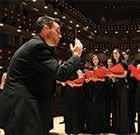
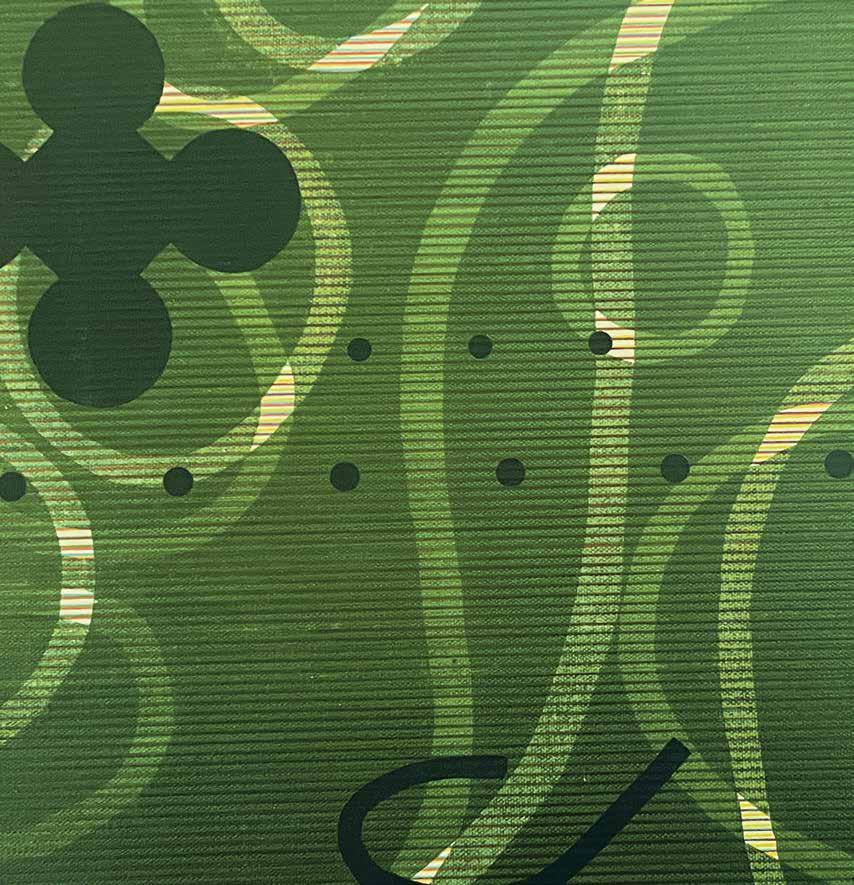
Experience a Magical Holiday Musical Journey inspired by Clement Clarke Moore’s An Account of a Visit from St. Nicholas
BY JAMES K. BASS


The holiday program this year is a slightly different format than we've used in the past. It is built around a very famous poem
An Account of a Visit from St. Nicholas, typically referred Twas the Night Before Christmas. It seems like anyone from any tradition knows this poem, and the verses will be woven through the program at intervals between the sets of musical composition.
“Twas the night before Christmas, and all through the house not a creature was stirring, not even a mouse.” There's an image of the children in the house at night, and they are waiting for St. Nicholas. It portrays hopeful eagerness and the anticipation of a child. Regardless of our age or our own experience, somehow the music of the Christmas season brings that same sensation back to all of us, whether we're 5, 55 or 95. That's what we will be trying to capture in this program.
The poem evokes images of ‘sugar plums dancing in their heads.’
We all know that Tchaikovsky
A Seraphic Fire Christmas and Brahms Requiem CDs released.
► Received 2 GRAMMY® nominations for its recordings A Seraphic Fire Christmas and Brahms: Ein Deutches Requiem. 2 0 1 0 2 0 1 1 Project CD released 2 0 1 2



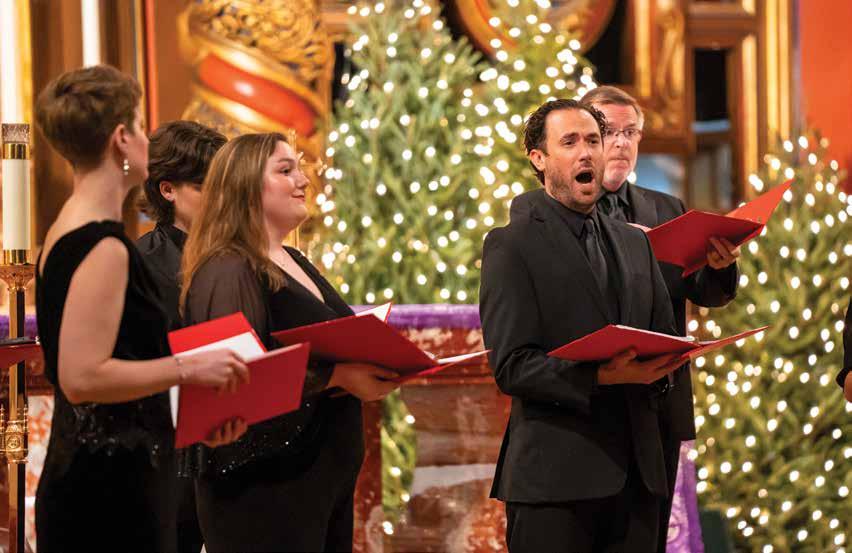
wrote Dance of the Sugar Plum Fairy. There's a choral arrangement of that which I'm going to reprise. We sang it many, many years ago, but we're bringing it back for this program. It is sure to bring a few smiles!
One of my absolute favorites is Only in Sleep by Erik Esenvalds, and it has a stunningly beautiful soprano solo. This Latvian work takes us through memories of childhood: it's only in sleep that I remember being there on the landing of the stairs, and there's my friend with her little hair and ponytails, and there's the toys. We will all go through a memory, through this experience
together, and it feels very much like it's Christmas morning. At the very end of the piece, the soloist says, Only in sleep, you know, I have these things. Wait a minute, am I a child? Am I perhaps just a child? Maybe this journey is not a dream at all.
This December, you’re going to hear a lot of new music that we have not performed and maybe you’ve not heard before. This is not a reprise of prior Christmas performances. There are new works by Audrey Snyder, The Christmas Processional, which we open with, Sally Beamish’s In the Stillness, and June Collin’s The Quiet
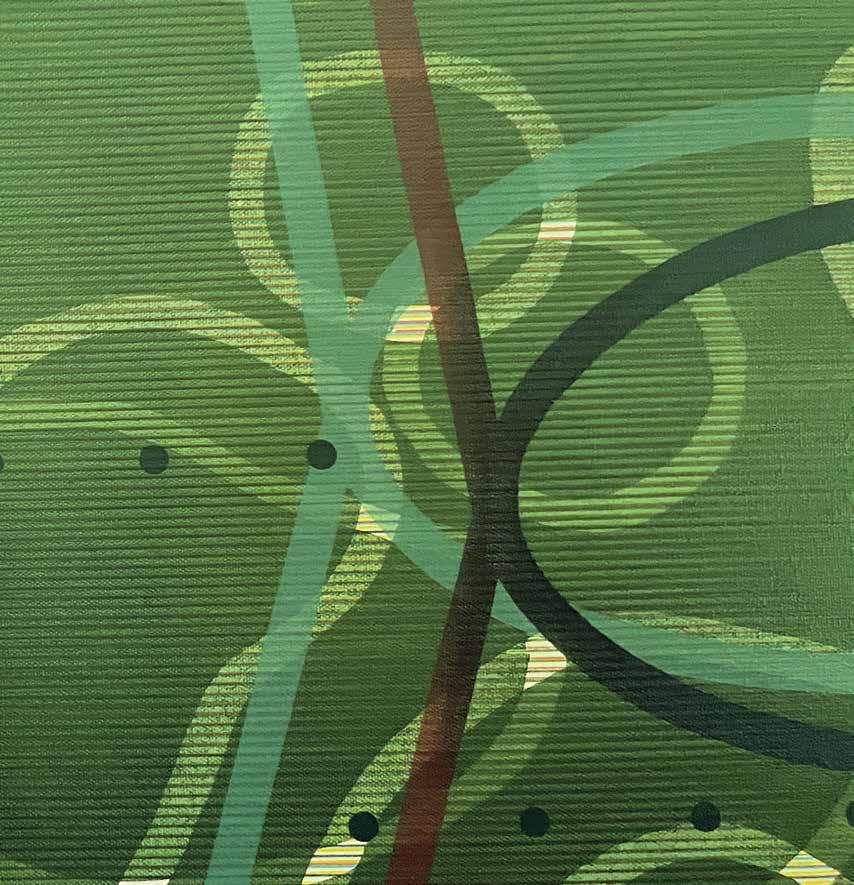
► Silent Night, Ave Maria, and Seraphic Fire CDs released. 2 0 1 3 2 0 1 4
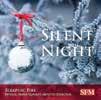

► Candlelight Carols and Reincarnations CDs released. 2 0 1 5

► Launch of three East Coast residencies in New York, Washington D.C. and Philadelphia, expanding our reach to a national audience.
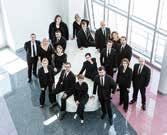
Heart. This last work contains a poem that makes a reference to everything being still and quiet. We've never sung Jolly Old St. Nicholas, but he appears on the roof of the house in the poem so our singers will delight you with this rendition.
Seraphic Fire’s holiday season concert is special and one that our patrons look forward to every year. There is a sensation that happens in a Seraphic Christmas candlelight concert, and it is just so special to have that in South Florida. There will be some of our favorites that our audience love, like Jesus Christ, the Apple Tree and Silent Night, but hopefully this new “twist” will be loved by our audiences, too.

An Account of a Visit from St. Nicholas by Clement Clarke Moore
BY BETH BRASWELL
It is somewhat of a paradox that the author of this very whimsical holiday verse, which was responsible for reshaping so many of our Christmas traditions, was a deeply religious man and the son of a minister. Clement Clarke Moore was highly educated, serving as a professor of Oriental and Greek literature at General Theological Seminary. In addition to poetry, Moore wrote on a variety of subjects, including in-depth biographies and a two-volume lexicon of the Hebrew language.
Yet, while shopping on a snowy winter's day, Moore was inspired to write his most famous poem, An Account of a Visit from St. Nicholas which he was composing to amuse his children. His portrayal of this “jolly old elf” who arrived on Christmas Eve and not on Christmas Day was an intentional departure from the existing traditions and beliefs, "deftly shifting the focus away from Christmas Day with its controversial religious associations." His story described Santa Claus differently, not the thin, gruff, horse-riding disciplinarian who had been based on the British Father Christmas, the Dutch Sinterklaas, and the fourth-century bishop Saint Nicholas of Myra. This poem created a vision of a chubby Santa who gleefully rode in a sleigh pulled by eight flying reindeer and magically squeezed into chimneys all over the world on Christmas Eve to deliver gifts to all the good children on his long list.
“I look forward to Seraphic Fire’s concerts every year. I’ve found the variety of concert themes from plainchant to Renaissance, baroque, and more modern to be interesting and stimulating, often introducing me to music that I have not heard. Even more important is the quality of the singers, each one being a professional soloist. Vespers comes to mind as one of my favorites.”
Bob W., Patron
2
► Steal Away CD released.
1 6
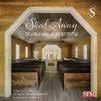
On December 23, 1823, a poem called A Visit from Saint Nicholas was published anonymously in the Sentinel, the local newspaper of Troy, New York. As its popularity soared, so did the number of people who claimed they had penned it!
Fourteen years later, Clement Clarke Moore finally accepted credit for writing An Account of a Visit from St. Nicholas. Because this poem wasn’t considered scholarly, Professor Moore had initially opted to keep his authorship secret. Moore’s vision of this new version of Santa Claus was allegedly influenced by the local Dutch handyman who operated the sleigh that took Moore home that snowy shopping day. Moore is credited with creating the modern-day image of Santa Claus and many of the traditions that permeate the holiday season.
► Celebrated its 15th anniversary by commissioning seven new works. Funded by a grant from the John S. and James L. Knight Foundation, including scores by Miami-based composers Shawn Crouch and Alvaro Bermudez, both long associated with Seraphic Fire.
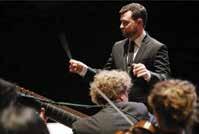
► Expanded Miami Choral Academy into the Seraphic Fire Youth Initiative (SFYI) to include training in the basics of music and singing for underprivileged elementary and middle school students.
Close Harmonies, Emotional Commitment, and Hopeful Messaging Permeate the Gospel Program of Jason Max Ferdinand
BY BETH BRASWELL
Jason Max Ferdinand has created a program whose foundation is African American gospel. It's a tradition he grew up in, and one that has significantly influenced American music, both classical and popular. He's going to feature some pieces that have been part of our history, like Precious Lord and Amazing Grace, but also music that people might not have heard before. Jason did such a great job with the music of Copland when he led Seraphic Fire in January 2023. He's a phenomenal conductor who brings energy and a different approach to choral music-making than other people do. We like to have artists with unique and distinctive voices come and perform with us, but also curate and lead our programs.
—Patrick Dupre Quigley
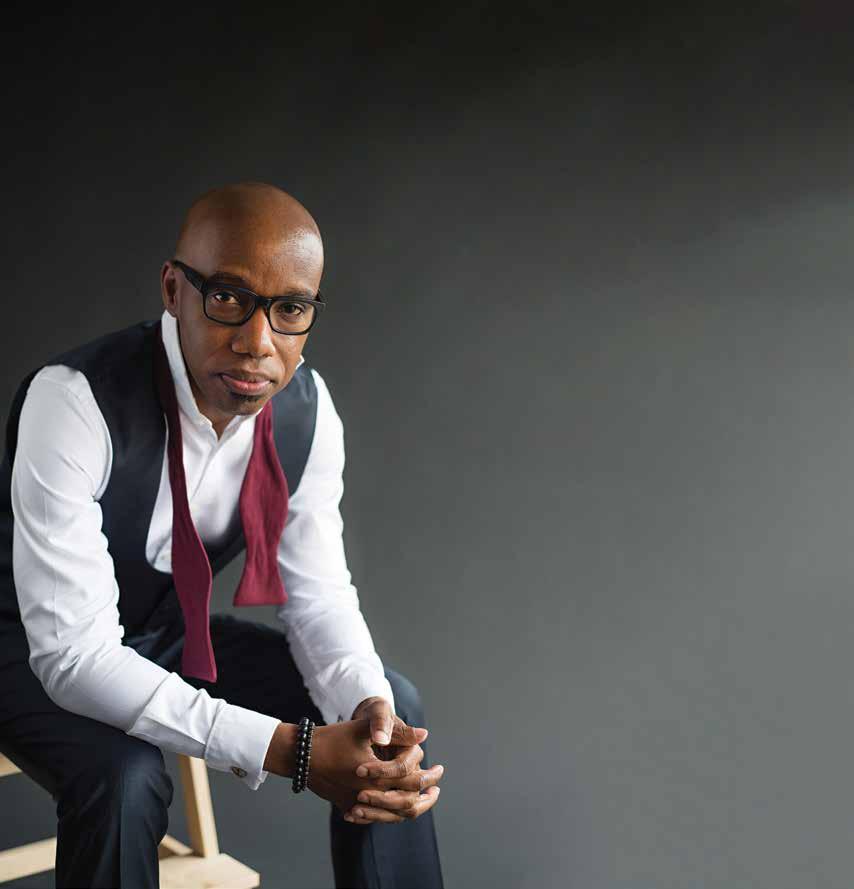
2 0 1 7
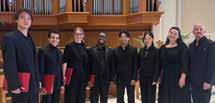
► Launch of the Ensemble Artist Program with UCLA Herb Alpert School of Music. 2 0 1 8
► The Professional Choral Institute was launched in partnership with Aspen Music Festival and School. 2 0 1 9
► Major Recording Successes—Albums like Reincarnations: A Century of American Choral Music and Brahms: Ein Deutsches Requiem charted on Billboard.
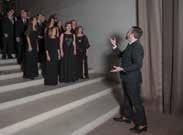
Q: When a piece of music is referred to as gospel, what does that mean to you?
A: Gospel music, to me, would mean it was born in the African American church, and it would have very strong rhythmic elements. So that's why, typically, it has a drum set, bass guitar, and organ. But with this program, we'll just use a piano and a cappella choir. The rhythmic elements will be there, but embedded in the music, the text, and the use of the piano. The crux of gospel music, like the Negro spirituals, was to give hope to people who were in dire circumstances. The spirituals were born on the cotton fields, and the music was used as encouragement to lift the workers’ spirits. Gospel music has elements of that as well, like, ‘where are we going?’ ‘Is there hope for tomorrow?’ So, a lot of these songs will have that theme in them. I think with the messages in these songs, everyone will be able to grasp something relative to their situation today.
Q: What time periods does this program cover? Was there a heyday of gospel music?
A: Gospel music was at its height in the ‘30s, ‘40s, and ‘50s; Thomas Dorsey was a Christian evangelist influential in the development of this music. This program, though, is taking a spin from more contemporary composers and arrangers. You have pieces by Mervyn Warren and Cedric Dent, who were two original members of the group Take 6, the most awarded vocal jazz group in history and born at Oakwood University. The University, at the genesis of Take 6, was very conservative in terms of religious services on campus, and their church had no drums, no bass guitar, no Hammond organ. As a result, Take 6 pivoted and took those elements of drums and bass guitar and put them into an a cappella arrangement. You'll clearly hear it. Another arranger here is Dr. Nathan Carter with Precious Lord. Dr. Carter was deeply embedded into gospel music. His father, grandfather, great-grandfather, and great-great-grandfather were all preachers. But Dr.
Carter went to Hampton University, The Juilliard School of Music, Peabody, and also specialized in—I'll use the word ‘classical’ here very loosely. So, in that arrangement of Precious Lord, which was written by the father of gospel music, Thomas Dorsey, Dr. Carter almost does it in the style of a motet on the classical side. This program covers more contemporary arrangers and composers but uses elements of classical music to heighten that style.
Q: Why is it important to listen to and understand gospel music?
A: Because it's a dear part of American history. The Negro spirituals are native American music, and gospel music is a derivative of the spirituals. Anyone trying to get a true picture into the origins of music from pop and rock to jazz to R&B, you would have to go back to these original forms, and gospel music is a strong part of that history. So many of our R&B singers, think about Whitney Houston, they all started in the church singing gospel music, including James Brown and Little Richard. Study gospel music if you're trying to get a good lineage of music in America.
Q: Was there a specific musical journey that you wanted to take the audience on as you devised this program?
A: Once I selected the songs, I put them in an order that will just create an experience for the soul. For example, Brandon Waddles’ Ride in the Chariot. This arrangement is with piano, and again, the original former Negro spirituals would not have had accompaniment. But Brandon has taken this, married it with piano, and very cleverly uses other elements of gospel music; for instance, you'll see a vamp in that arrangement, even elements of Broadway music. Brandon Waddles is on tour right now with the Broadway show The Wiz. And he's also a classically trained musician, conductor, and pianist. He's taken all of these elements and put them into this one arrangement. Hopefully, each piece on the program will deliver its own ah-ha moment, but in

2 0 1 9
► Launch of Student Composer-in-Residence Program in collaboration with the University of Miami’s Frost School of Music.
2 0 2 0
► Seraphic Fire launches its “Seraphic Saturday Podcast” with the first ever episode featuring Artistic Director Patrick Dupre Quigley in conversation with James K. Bass, Professor of Music at UCLA, discussing the ensemble's history and musical journey.
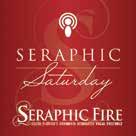
2 0 2 1
► Hildegard von Bingen: Ordo virtutum CD released.
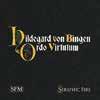
different and varying ways. Some will feel more introspective and contemplative. I hope people say, ‘wow, I didn't realize this music had so many elements and would create so many opportunities that make me really think.’
Q: What is the challenge to the artists and how can they best bring this music to life?
A: Seraphic Fire has the best singers in the nation, so, from a technical standpoint, no problem. Some of these songs will require quick shifts in vocal timbre. For example, There's a Quiet Place by Mervyn Warren. It is literally a song from the Take 6 canon. And to perform that very, very well, we'll have to sing this with no vibrato, so we can hear all the verticality of the chords. We also really need to make sure we deliver transparency, including myself, making sure all these chords and harmonies are locked in and true. For the common layperson, you can see a chord with six different notes; we have to go through and make sure the balances are correct: more E flat, less D, and then really fine-tune all these things. But with these high-caliber singers, it should be a lot of fun.
One piece to watch for is Precious Lord. Musically, it’s probably not challenging, but emotionally, we really make our souls bare. Dorsey wrote this piece at the high point of a tragedy; he lost his baby during the pregnancy, and he composed that song out of great depression. The singers and I really have to get ourselves to that emotional place to convey such a heartfelt text, and that is the challenge. Safe in His Arms is a piece that I did alone with my wife. It is very harmonically dense. Hopefully, we just make it seem easy, but just know that the paddles below the water are rapidly moving.
Jason Max Ferdinand: A Career Packed with Applause
BY JASON MAX FERDINAND
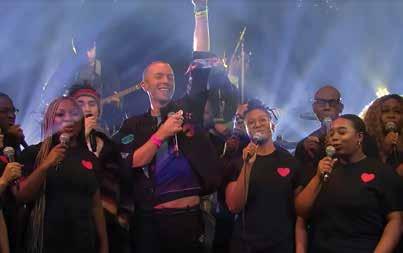
The Jason Max Ferdinand singers have been busy in their short lifetime. Last year, for our UK debut, we sang a program of classical, jazz, and gospel for the BBC Proms in Royal Albert Hall in London to amazing accolades. The Guardian called us a “choral supergroup” providing “soul revivifying musicianship.” Another unusual and humbling performance was when we joined Coldplay and YouTube phenomenon Jacob Collier for a surprise performance on Saturday Night Live. The British rock band sang The Astronaut, with our ensemble joining lead singer Chris Martin to create a very exciting chorus. We collaborated on two more songs, providing exceptional harmonies on Human Heart and Fix You
I’ve also been busy with concerts around the country, from leading my University of Maryland students in Kennedy Center performances to guest conducting with the Savannah Philharmonic and the Alabama Symphony. I’m still composing and arranging, and right now I’m in the middle of completing a commission for the Londonbased group Tenebrae.

► The Ensemble Artist Program began partnership with University of Miami’s Frost School of Music.
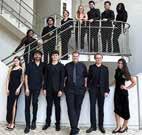
► Seraphic Fire launches its online blog “Inside Seraphic Fire.”

2 0
2 2
► Seraphic Fire was awarded a $15,000 grant from the National Endowment for Grants for Art Projects.
The Breadth and Tımelessness of American Folk Music
BY BETH BRASWELL
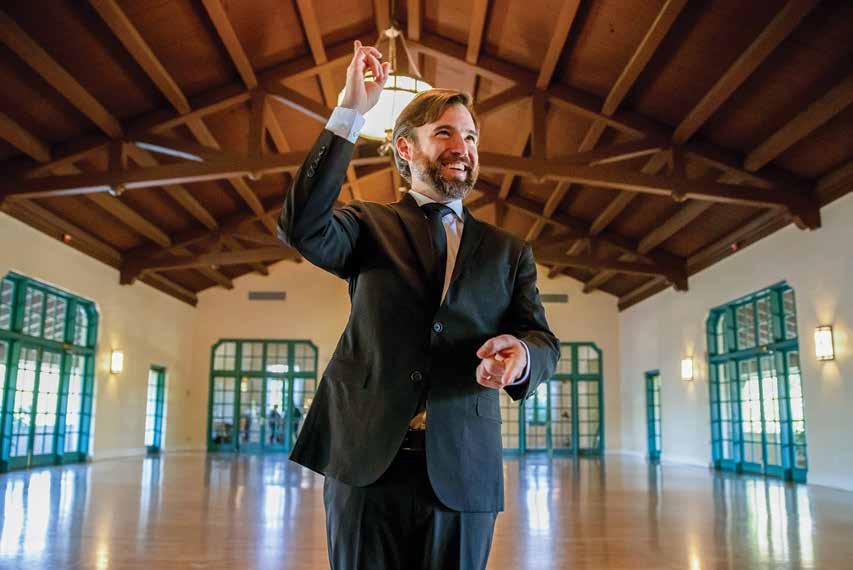
American Folk music has always been a part of Seraphic Fire's history. It's a tradition that I grew up with because my parents were such fans. I have arranged a lot of this music in my life for Seraphic Fire. You will recognize some of these pieces such as Oh my darling, Clementine—songs that are integral to the American musical experience. This is a style of music that made classical music, pop music, rock and roll, rhythm and blues, and jazz in the United States what it is today. American early music played a foundational role—literally the same thing as what Gregorian chant is to European music. It's where the distinctive sounds of American composers come from.
One of the pieces that has been at the heart of our repertoire for years is a piece called Hymnotic Delays by Ingram Marshall, which is based on early American Folk hymns. Our listeners will get a sense of how American composers—both the anonymous folk music writer and the 21st century American composer—handle this music."
— Patrick Dupre Quigley

2 0 2 2
► Miami Clásica, described the season as an “emotional return” post pandemic, highlighting a heartfelt rendition of America the Beautiful, arranged by Quigley.

2 0 2 3
► The Apple Tree: Christmas with Seraphic Fire CD released and cracks the Top 10 Billboard Traditional Classical Albums Chart.
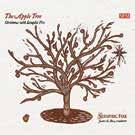
American Folk music encompasses a wide spectrum of music with roots that span the globe. Particularly in the Northeast and New England, much of that music had its preColonial origins from the British Isles, influenced by ballads, jigs, hornpipes and reels -although areas in Pennsylvania, New York, and New Jersey saw musical influence from the Germans, Dutch, and Swiss. In the Southeastern United States, there was a great African American influence with spirituals and gospel. Spirituals often originated by white American ministers using English folk melodies and religious lyrics. Banned from singing in their own language, African Americans took this spiritual music and added their own themes, including slavery and emancipation, and their own style— incorporating dance and anything that could be used as an instrument.
Another style of rhythmic music was the sea shanty, such as Blow The Man Down. Used to help lighten the burden of repetitive tasks in the 19th century merchant navy, different rhythms were used for the type of work being done. The foreman or shantyman was responsible for leading the song. Developed by boatmen on the Mississippi and Missouri rivers, Shenandoah (named for an Iowa Oneida chief, not the valley) is another sea shanty that
has continued in popularity, being used in a movie in the 1960s and featured during the final credits of the 1995 film Nixon.
Cowboys were popular as characters in novels, Wild West shows, and early movies, but even cowboy ballads can have foreign origins. The Streets of Laredo, AKA The Dying Cowboy, comes from an Irish folk song of the 18th century. Folk songs can change in the retelling over the years, and they can appear in several versions. Bury Me Not on the Lone Prairie is based on an earlier poem, "The Ocean Burial." Others, including Home on the Range and The Old Chisholm Trail, came straight from the frontier. There were also railroad songs, the very well-known Ballad of Casey Jones, about a conductor who sacrificed himself to avoid a collision. In Cotton Mill Colic, textile workers lamented the conditions and pay scale they struggled with. Similarly, loggers sang about their struggles with being away from home, treacherous work, and difficult conditions, but also about the excitement of riding a log down the river and the camaraderie of their camp.
In the South, local "roots" music included bluegrass, jug bands, Appalachian music, blues, and Cajun tunes. Best known for Can
the Circle Be Unbroken, The Carter Family was a traditional American folk music group that recorded between 1927 and 1956. Their music had a profound impact on bluegrass, country, Southern gospel, and rock musicians—and they led the divergence of country music from traditional folk music. Other artists such as Bob Dylan, Loretta Lynn, Dolly Parton, and Bruce Springsteen were significantly influenced by Appalachian music and continued those traditions in their music.
Folk music was used very effectively in the 1960s by the Civil Rights Movement as a social and mobilizing force. John Denver, Woodie Guthrie, Joan Baez, and Joni Mitchell were only a few of the artists who used it to motivate change through solidarity. There was even a school where activists came to learn all the songs and study nonviolent philosophy. Jamilia Jones was there when the school building's power was shut off by police wielding guns and billy clubs. Singing We Shall Overcome in the dark, the chorus got louder and louder until one of the policemen came over visibly shaking and said, "if you have to sing, do you have to sing so loud?"
At that point, Jamilia said she realized the significant power their music wielded.
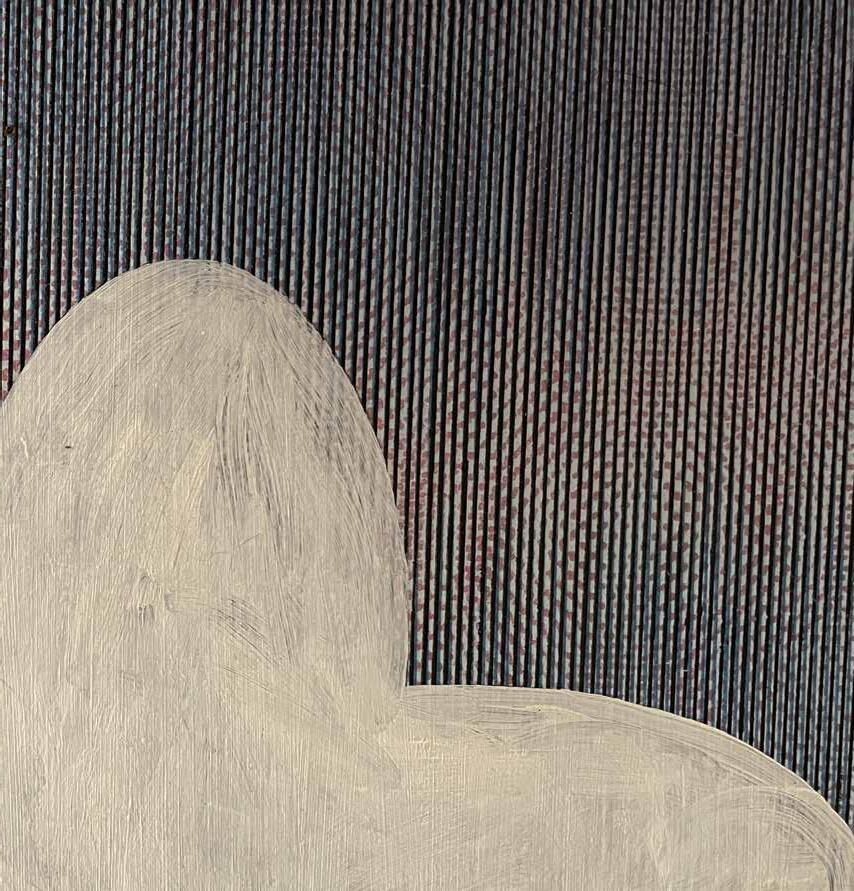
► New World Symphony collaboration of Carmina Burana at The Arsht Center.

2 0
2
4
► Seraphic Fire continues its tradition of artistic boldness, stylistic range, and ongoing commitment to both historical exploration and innovative programming. The 22nd season opened with “A Brief History of Western Music”, a sweeping program tracing nearly a thousand years of choral tradition— from Medieval chant through Renaissance, Baroque, Classical, Romantic, and 20th-century works. The concert showcased superb stylistic versatility and earned many standing ovations.

2
0
2
5
► Record-Breaking Fundraising: Despite challenges in the arts sector, Seraphic Fire concluded the fiscal year ending May 2025, with a balanced budget and the highest individual fundraising total in its 22year history.
At some points in its past, folk music had the stigma of being simple or anonymously composed by poor or rural peoples. That’s just not the case. In the late 19th and 20th centuries, American folk music collectors began the process of writing down the words and melodies to a variety of traditional expressions including Native American ritual songs. In addition to studying song texts and melodies, folk music scholars analyzed the social function of folk music. For example: How did Native American chants and African American spirituals operate within the context of a religious ceremony? How are Celtic American fiddle tunes central to Appalachian gatherings? How did traditional blues and ballads reflect the differing views of southern blacks and whites?
Today's revival of folk music can be attributed to its accessibility through online streaming. New terms of folk-pop, folk punk, and indie-folk resonate with younger Gen Z listeners. This contemporary folk music covers everything from spirituality to death to family trauma. Even Taylor Swift has a folk pop album, Folklore, where she sings about childhood memories, Rhode Island, and fear of failure. The core of folk is storytelling and yet another generation has embraced this musical genre as an effective narrative tool.

The Interesting Backstory of Marshall’s Hymnotic Delays
BY PATRICK DUPRE QUIGLEY
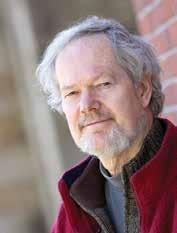
Hymnotic Delays, by Ingram Marshall, is a piece that Seraphic Fire has performed probably more than any other. It takes, as its base, four American folk hymns. Marshall slowly deconstructs them to create this dreamy world by slowing down individual lines and layering them on top of other lines. It was originally written for four individual singers. They would sing the lines of the hymns into microphones live, and Marshall would then loop them, meaning he would take that voice and repeat it four beats later so that it sounded like an echo, and then he would slow it down, and he would manipulate the pitch. Marshall ran the Electronic Music Lab at Yale’s School of Music and spent a lot of time working in electronic music and the manipulation of sound through electronic means.
For Seraphic Fire’s fifth anniversary, we wanted to do a piece that no one else was performing at the time, so I called and asked Ingram if we might be able to transcribe Hymnotic Delays and perform it. And he said, “No”; he actually refused. After some discussion he finally said, “Why don't you try it and you can perform it once, and I'll listen to it.” One of our singers, Suzanne Hatcher, spent hours and hours transcribing it, and from the very moment that we performed it for the first time, people were ecstatic. It's an astounding piece, because at every moment, every person in the choir is singing a different part. So, 12 people on stage, 12 different parts. It's one of the most fulfilling pieces of music that we have premiered.
Marshall listened to it, and he said, “This is amazing. Yes, you can absolutely keep this in your repertoire. It's almost a new piece, because mine was from a machine, and you’ve created a live piece of music out of it.” We've now toured that piece all over the country to rave reviews.
“I fondly remember singing a Bach cantata with the Cleveland Orchestra in the Arsht. In the first rehearsal, the sopranos sang a melismatic line in unison with the violins, and I’ll never forget how most of the violin section (of one of the best orchestras in the world) turned their heads as they were playing; they all expressed awe and almost bewilderment about how incredible it was. I’ll never forget the expressions on their faces.”
John Buffett, Seraphic Fire, Baritone
We are excited that Arianne Abela is making her debut with Seraphic Fire this season. She's a really, really talented young conductor with her own professional group called Kaleidoscope, where a number of Seraphic Fire artists also sing. Arianne has a deep love and commitment to Renaissance music AND contemporary a cappella choral music. She's going to take those two things and mix them together to create an atmospheric experience so our audience can listen to these traditions that reach across the centuries, but really are holding hands at the same time. People will hear how Renaissance music influenced contemporary choral music.
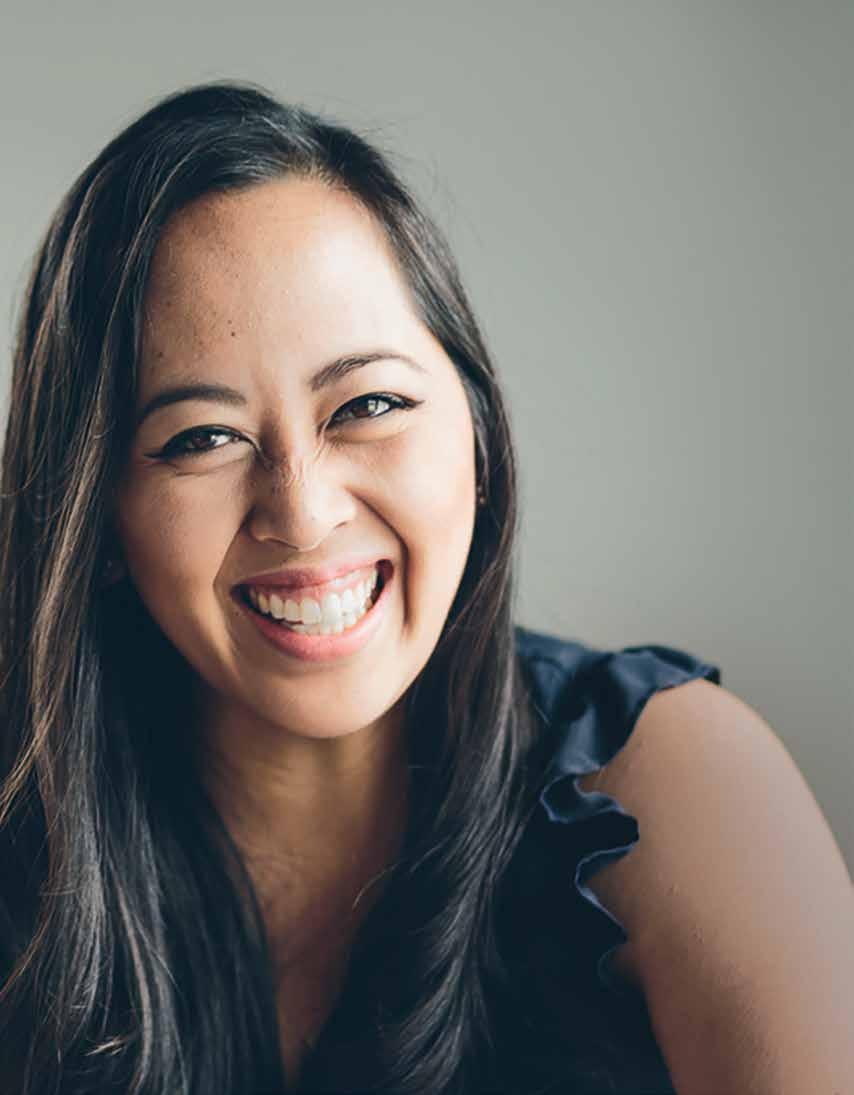
Conductor Arianne Abela Leads a Sensory Musical Experience Designed to Explore the Wonder of Nature
BY BETH BRASWELL
—Patrick Dupre Quigley
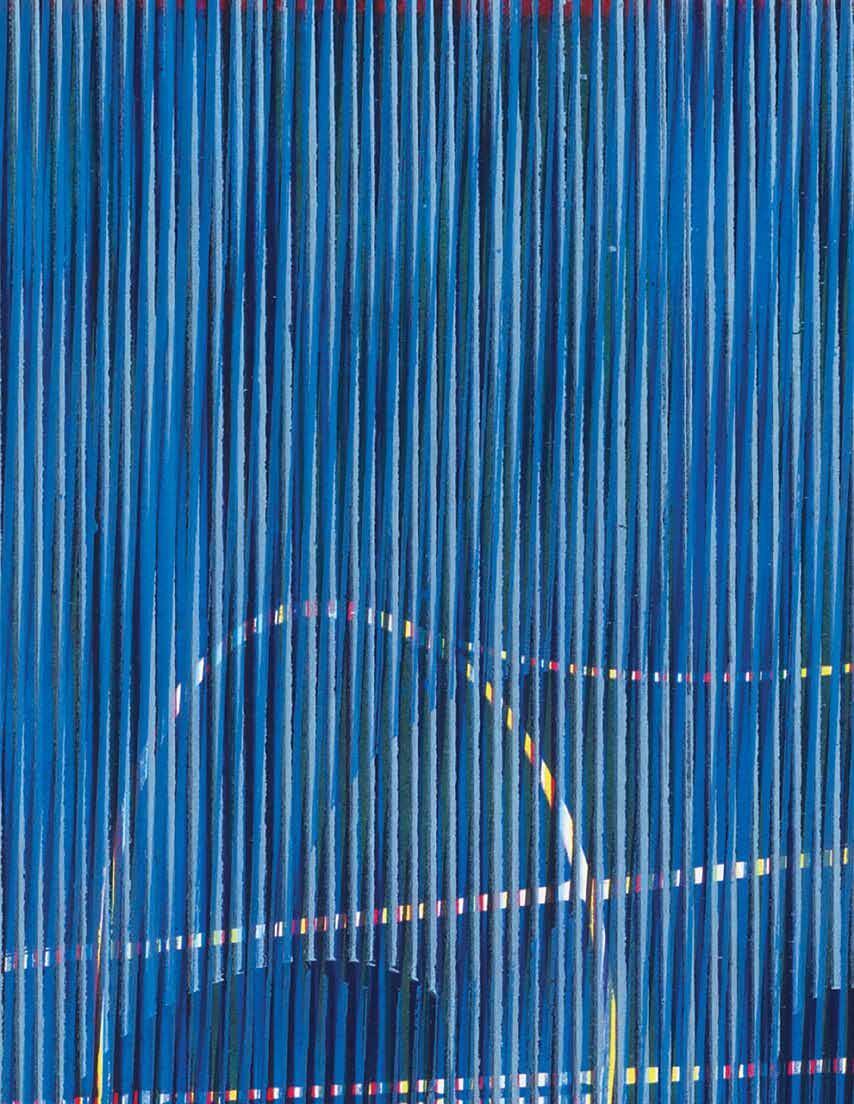
Q: This is your debut conducting for Seraphic Fire. What is your expectation?
A: I've been to Seraphic Fire concerts, especially when they presented Christmas concerts in Vermont. A lot of the same singers perform with me at Kaleidoscope and also at Seraphic Fire. Oh my gosh, Seraphic Fire is amazing. I love that the breadth of repertoire and the level of music making are always so high-level and beautiful. I've admired the ensemble for a long time, and I'm just so honored to be asked to collaborate.
Q: How did you decide what the theme of your program would be?
A: We came up with three to four program ideas and one of those turned into a water theme. This is a wonderful opportunity for me to do a lot of repertoire that I haven't been able to do. I love the water, having lived on the Detroit River and growing up close to the SF bay, and I chose pieces that were very special to me. I wanted to showcase the different sides of water: the power and the danger of water, and then also the peace and serenity of water. Around that, additional pieces are about nature and its connection to the world. When I found out that this will be a candlelight concert too, that solidified my thinking of ‘let's connect to the earth and the nature around us’ and create an experience for the audience.
Q: How would you describe the program and the story the music tells?
A: I have the program laid out in different sets of music that will be performed without applause. We start with a chant from Hildegard von Bingen and then perform Mountain Nights by Kodaly. It immerses us in the wilderness and in nature. The next section is more about the rough waters and, honestly, I've been thinking a lot about those families in Texas and the devastating impact of water and the flooding, and what that means: how nature can take over and leave us powerless. Two pieces, Canticum calamitatis Maritimae by Mäntyärvi and Kuster's White Hurricane, both address the turmoil of water, as they are two historic shipwrecks. Those pieces
are going to be really impactful. Then the music features the more serene waters we experience. That will be really very special because it's going to paint this beautiful, contrasting picture of calm waters. We are doing a very cool piece called I am a cloud. It's very different from everything else we'll be performing.
Q: It sounds like you're taking the audience through an array of emotions. Do you want our listeners to walk away with a message?
A: I see every program that I curate as a journey and a message. I don't necessarily make the messages so ‘in your face,’ but I juxtapose pieces deliberately for that transformation, to stir up feelings in the audience. And a lot of times I don't have applause in the middle of sets, because I want there to be that connection between one piece to another. I want the audience to think, “how does this piece connect to this next piece, and what is this message that we're going for?” So, it really should feel like a musical journey.
I think people will leave feeling like they had a full body experience, and not just with their ears, but everything about the program is thoughtful and stirring.
Q: What are the most difficult or challenging pieces for the singers?
A: I think many of them may have performed the Canticum by Mäntyärvi; it has some difficult moments, and there's some tricky rhythms. That one will be a challenge, but it has this peacefulness and then harshness in the center and back to peaceful. So, I think anytime anyone performs that piece, it’s very fulfilling and it feels powerful to perform. The other is a Filipino piece, so the language Tagalog might be tricky. That piece has a lot of different brighter sounds in it that might be a new experience for some and a challenge in a different way. Whenever you don't have accompaniment, it’s going to offer a challenge. That's why I'm so excited, because I know that these singers are just phenomenal, and will be able to do it flawlessly.
Learn More About Arianne Abela
BY BETH BRASWELL
Q: Let's talk about how you decided to follow this career path. When did you know that you wanted to be a conductor?
A: I grew up in the Bay area singing with the San Francisco Girls Chorus. I'm missing most of my fingers, and I am missing my left leg, so I wear a left leg prosthesis. When I was growing up, I had a really hard time. I was very shy and hid my hands all the time in my pockets or my sweaters. I remember feeling really ashamed if I wore shorts. Singing in the choir with SF Girls Chorus was the only thing that really brought me out of my shell and helped me survive the difficulty of trying to fit in as an adolescent. I just was so passionate about it. I loved singing in the choir so much, and I never really thought I would make a career out of it. I started college as a government major, and that first year my teacher called me one day and said, “I'm stuck in a snowstorm. Can you lead rehearsal today?” And I thought, No way. Why would I use my hands in public? It's something I hide all the time. Why would I do something that would showcase them? But I remember leading that rehearsal and loving it and forgetting that I had this disability. From that point on, I was more interested in conducting and teaching. I switched to a music major and realized my vocation was focused on sharing music with other people. I've just really loved it. After Smith College, I attended Yale for my master’s, taught high school for a while, got my doctorate at the University of Michigan, and it's just been my passion ever since.
Q: What does your life look like today?
A: My current life situation is being a parent of three small kids and being able to have this balanced career of professional work: teaching at the college level and managing Kaleidoscope, which is my passion. Kaleidoscope vocal ensemble is really my baby. It started in 2019 and has been growing and developing to help highlight people of different genders and races in our field. We just wanted to have a group that looked much more like what America is, which is all kinds of people who are immigrants or people from different countries,
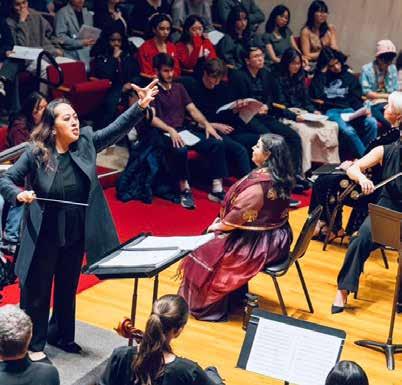
different heritages, mixed races. We incorporate these voices and their stories into the musical programming.
We're starting our first Kaleidoscope Vocal Academy this summer. We'll be at Yale, and it's fully funded for 24 kids from all over the country. They're going to be able to work with Kaleidoscope and stay for no cost. To me, that’s really exciting, and maybe the highlight of what I've been working towards for a long, long time. I think about disability and advocacy and just having a place where people can feel like they belong in music. There is a place at the table for everyone in music.
A lot of people think they need to have a separate career and home life. I honestly feel like both are such a big part of who I am. Being able to do both well in a balanced manner is important. In 2013, I did go on America's Got Talent leading 3Penny Chorus and Orchestra. It was really fun to do something mainstream that inspired young people to see choral and orchestral music in a different light. We auditioned with Carly Rae Jepsen’s Call Me Maybe and all four judges voted a resounding YES for our outstanding performance!
I am so excited to work with Seraphic Fire this year and I cannot wait to curate something I hope will stay with the audience and singers for a long time.
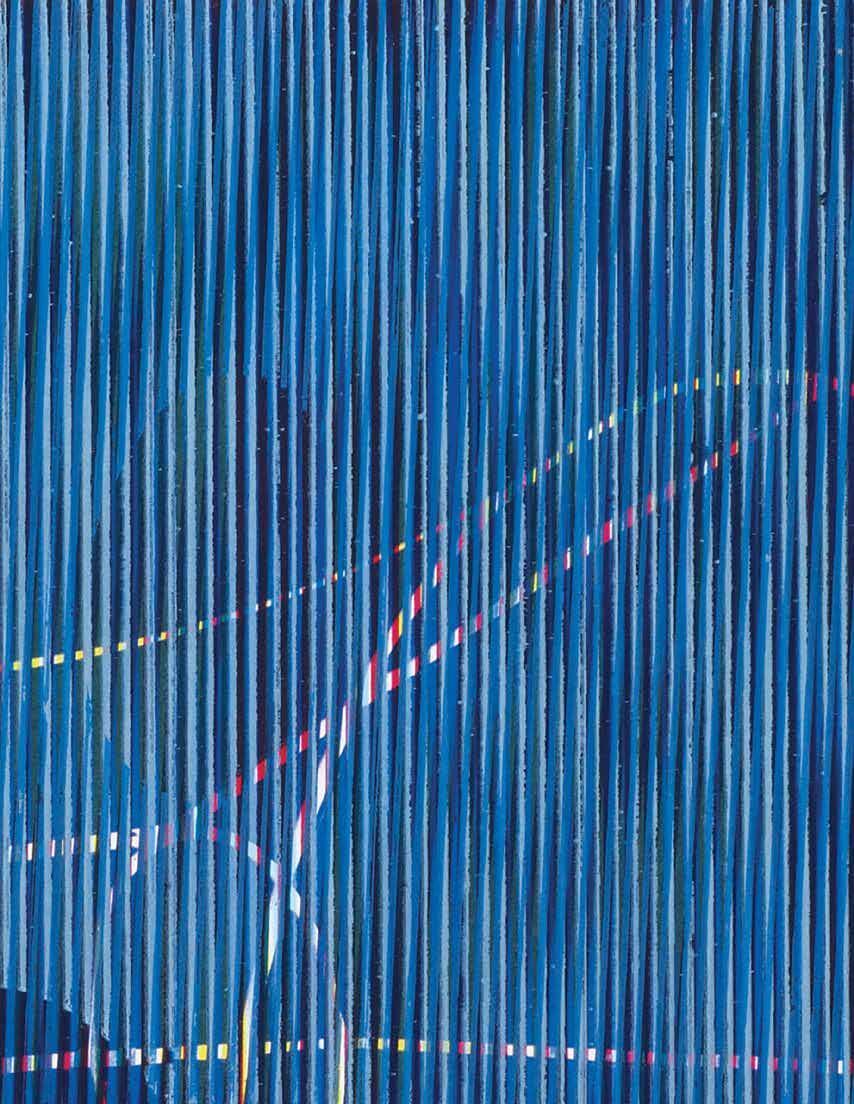
A Celebration for Your Senses
BY BETH BRASWELL
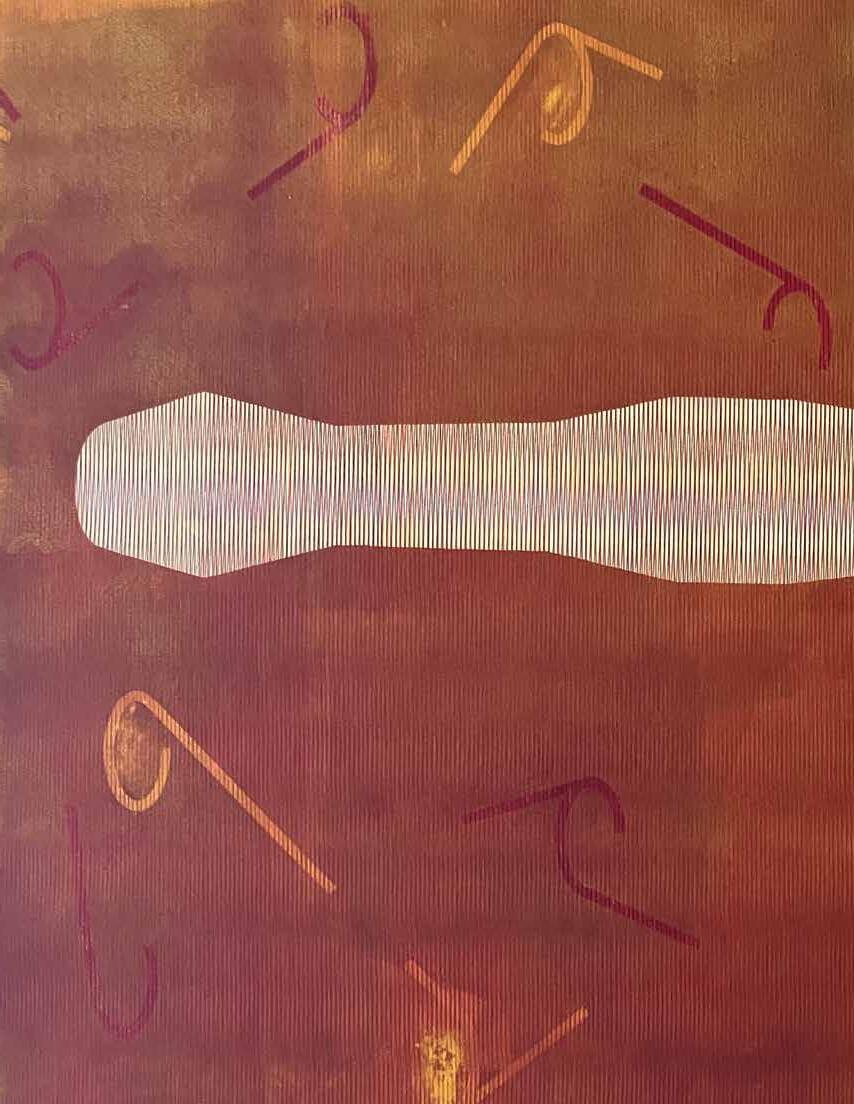
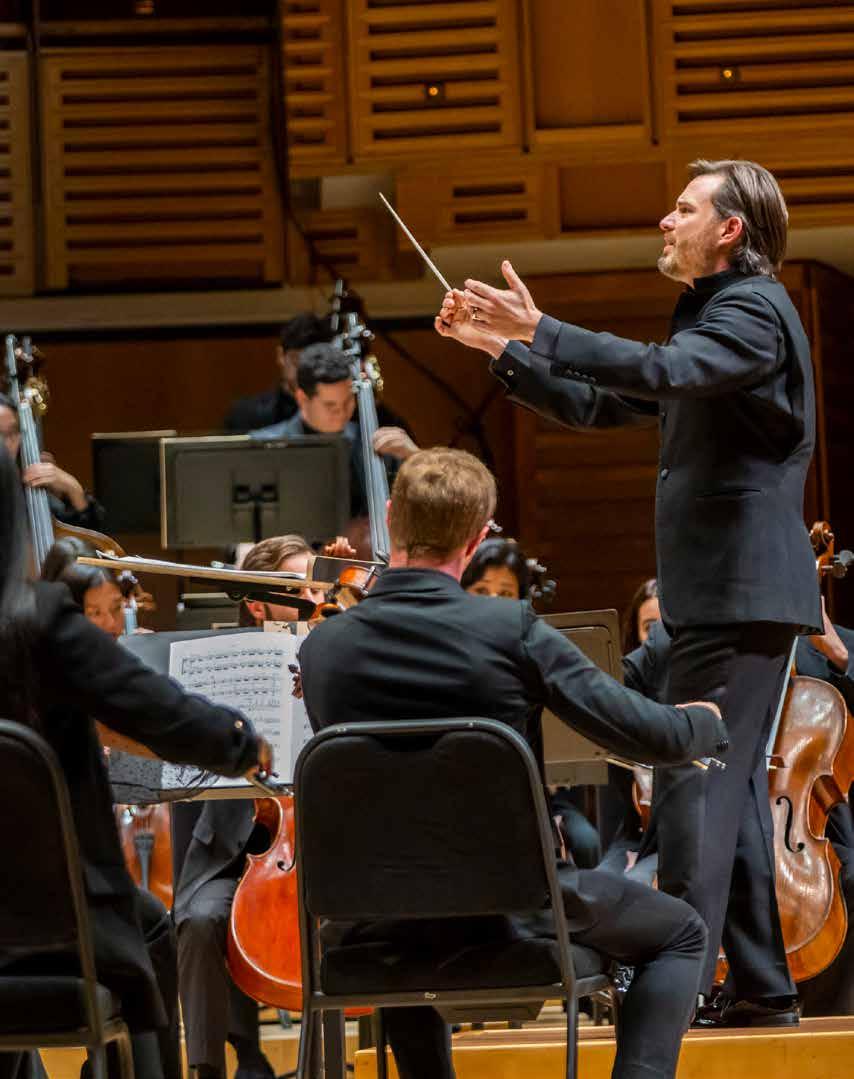
Seraphic Fire’s use of Surround Sound has delighted our audiences for years. It’s been part of our DNA since the beginning; our ability to spread out and utilize the whole of a venue and create this amazing sound that elicits OMG moments. We perform pieces that separate our artists so that the audience hears either individual voices, or we split into two or perhaps three different groups. Sometimes, we surround the audience entirely and sing so that people feel the sound coming from different places, like we do at Christmas for Jesus Christ the Apple Tree. The Allegri Miserere is another good example—it requires three different choirs—a group singing a quartet, a larger choir, and then a chant ensemble—and they're in different places. It’s exciting to hear and but also fulfilling to see the effect on audience members.
In today’s vernacular when you say ‘surround sound,’ you may think of the Dolby speaker array for high impact movies like Star Wars or perhaps the 1940 Fantasia movie from Disney with its groundbreaking Fantasound. But, the surround sound tradition is much older than the movies. It originated in the monastic communities that sang chant for small prayer services multiple times a day, from the moment that the monks and nuns awoke in the morning until their last activities at night.
These psalms from the Bible were performed in a style called antiphonal singing, which is dividing the congregation of religious people into two groups. They're usually facing each other, and they each
take turns singing a verse of the song, alternating with each other. That tradition, particularly in the European cathedral, evolved as composers began to exploit the music for grandeur. So instead of having one group of people singing in unison and then another group of people responding, they would have one group of people singing in unison, and then a choir in four parts would answer; or there would be a duet and a choir of five parts; or two four-part choirs that are physically divided between each other. At the beginning of the Baroque period, multiple choirs were utilized. There are some pieces that are written for five or six choruses, all to be sung at the same time. This tradition really came to its height at the Basilica of San Marco in Venice under the chapel masters Andrea Gabrieli, his nephew Giovanni, and Claudio Monteverdi.
At a typical concert, the audience is focused and listening in the same direction, and the sound comes to them. However, there is a miracle of physics that happens when someone attends a live music performance where the music is not amplified. Acoustic music allows the sound from the voice or the instrument to travel directly from the person producing that sound to the listener. For example, a member of the tenor section will sing a note, putting air through their vocal cords, which will vibrate and create a tone. And as that person's vocal cords resonate, then, almost simultaneously, the people in the audience will also experience a sympathetic vibration in their eardrums and their whole bodies
will conduct that sound. This is the same if a violinist pulls the bow across a string that makes it vibrate. That vibrating string causes the audience to also vibrate at the same rate. This surround sound concert will create a much more immersive, tactile, and direct experience so that the listener is an integral part of the music making.
Just because this is a surround sound concert doesn't mean that Seraphic Fire singers are going to encircle the audience for every song. Sometimes there will be a group of artists behind them and a group in front of them, and sometimes the sound will move around the audience or go through the center. There will be times when they're fully surrounded. From simple Gregorian psalmody to the polychoral motets of the Gabrielis, canons (like Mozart’s Dona nobis pacem) and masterpieces of Monteverdi including the “Ave Maris Stella” from Vespers of 1610, this concert is designed so that the audience can experience the fullness of the sense of hearing.
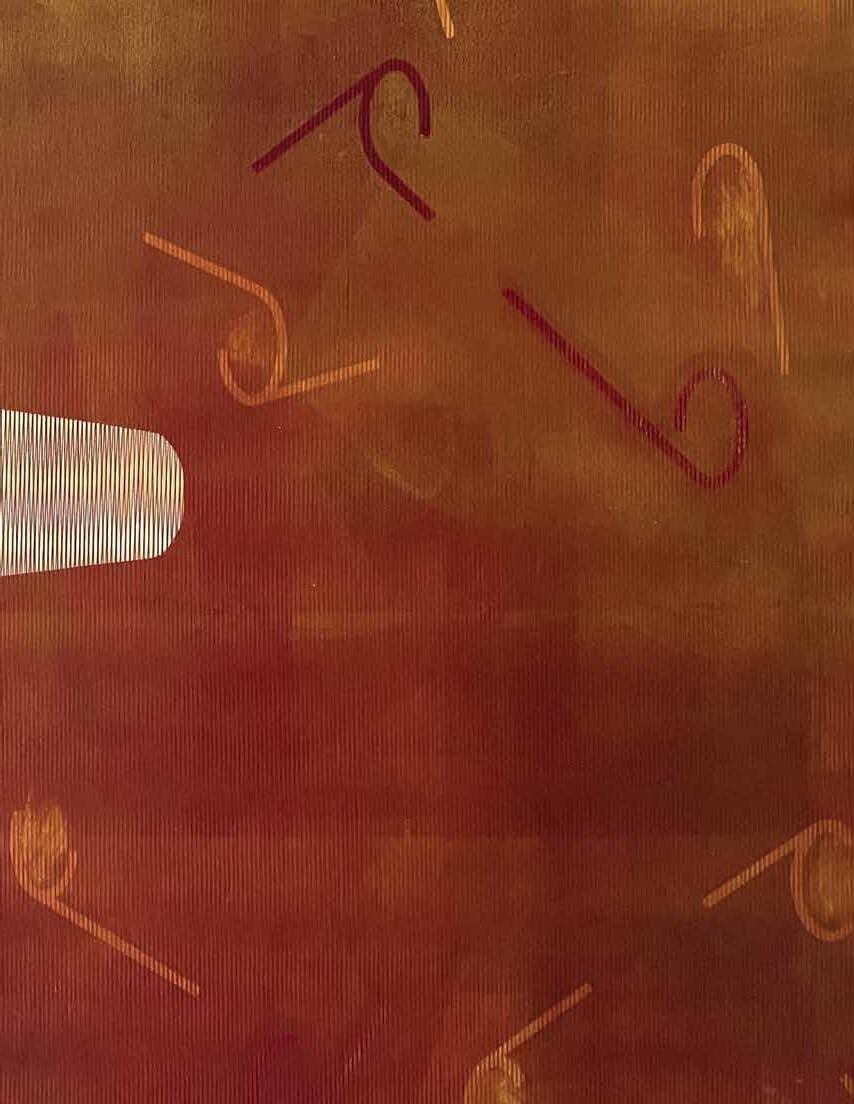
“I was concertmaster of Seraphic Fire’s “Monteverdi & Mozart” program, the last of Season S. It was my first inperson project since Covid-19. I remember when I heard the sound of this amazing choir singing together for the first time in over a year. It was magical, and I was personally reinvigorated.”
Edson Scheid, Seraphic Fire, Violin
Music Education: Cultivating the Love of Music at Every Age
This past season, the Seraphic Fire Youth Initiative (SFYI), a free music education program, impacted 4,203 students with programs serving every educational level and schools that included public, charter, and private.
▶ At two Miami-Dade elementary schools, Comstock and Kendale Lakes, students received weekly guidance from a UM doctoral student, with every student showing improvement in their music knowledge and peer relationship skills.
▶ In April, the SFYI presented its end of the year concert at the Arsht Center with 1,772 students and guests watching 90 performing students from those two schools sing side-by-side with Seraphic Fire.
▶ In February, 60 advanced choral students from Ferguson High School and Hialeah Gardens spent a day with Seraphic Fire artists at the annual High School Masterclass.
▶ And, for one week in June, 11 different schools from Miami-Dade chose 60 of their most musicallytalented high school students to be mentored by Seraphic Fire artists and our professional conductors at the High School Professional Choral Institute (HSPCI); preparing them for college and gaining insights into musical careers.
Students, Teachers, and Artists Recognize the Benefits of PCI
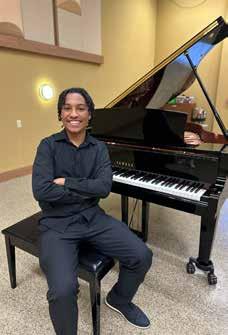
Diego Peña, a student at Doral Academy Preparatory High School, participated in PCI 2025. Here is his story:
I have been singing for the past year with my school's choir and playing piano for about nine years. I also sing in community choir, and I'm the collaborative pianist for them. I really like classical music, and I'm leaning towards that for my career.
I am interested in Music Business and Administration, but also in the law aspect of music. I’m considering FIU or NYU as a music business major, but University of Miami is my top choice. But, I really like performance. For me, it’s a method of expression
more than anything, and I would love to facilitate that opportunity for other people. I'm a very organized person so I would really love to go into management. That's why I contacted Andrea at Seraphic Fire about shadowing her to learn more about how Seraphic Fire works; what takes place behind the scenes, and how everything at PCI stays so organized. I wasn't only there to sing, but also there to meet other people and to see how the music world really works for professionals.
PCI helped me become a more expressive singer. The conductors, Mr. Quigley and Dr. Bass, made me just feel the dynamics a lot more and understand the phrasing of
the passages. It made me more in tune with myself, my emotions, and my method of expression when I sing. One of the singers I talked to most was Marques, a bass. I sat next to him during rehearsals, and he was very supportive. I would ask his advice, not only for pieces, but about the music industry. He was very excited and passionate talking about it.
All of my friends and the students I met were so happy to be at PCI. And that's not something you see a lot in high school environments. At the Seraphic Fire PCI, everyone was there because they chose to be there, and they are passionate about music like me. PCI was an environment where I felt very, very happy. And honestly, it really solidified that I would be going into music, whether that be business, administration, or a related field.
Dr. Adalberto Yanes, the Visual and Performing Arts Director at Doral Academy Preparatory High School, recognized Diego’s talent and commitment to music, recommending him for PCI 2025 and what he termed ‘a life-changing experience.’ He explained: “Singing alongside and receiving instruction from Seraphic Fire gives students a sense of selfworth so needed in a time when the arts are depleted of funding. We are so lucky that Seraphic Fire recognizes and encourages young artists through performances and workshops yearround.”
Seraphic Fire’s education outreach is not only extremely impactful for local students and their teachers, but our Seraphic Fire artists take away a great sense of accomplishment and pride by mentoring these young musicians. Karen Neal, Seraphic Fire alto, shares her passion for music education:
I participated in the 2024 and 2025 HSPCIs at FIU and have had extraordinary experiences. I am Miami-based and have worked in the school system throughout my career. The choral students in Miami are diverse, competitive, talented, with access to the finest instructors. The top choristers are recommended for this seminar, and it is remarkable to witness their development side-by-side with members of Seraphic Fire. These students are able to listen and mimic at a rapid pace and accomplish high levels of performance in a short time. They are singing with seasoned professionals while following expert conducting and direction from world-class conductors, herein lies the magic. Imagine being able to magically pole vault when you have been used to doing a very impressive standing long jump.
Seraphic Fire curates its repertoire choices to challenge and inspire. 2025's line-up did just that. These were pieces that would be very difficult for high schoolers to perform on their own; especially
the “Missa Criolla” by Ramirez. This Argentinian piece had tricky rhythms and thick harmonics that took me, as a professional, some deep study time to figure out. As students mirror me and all those around them, I feel this confidence helps them discover the music beyond the page, which is the goal of any performer. I am also able to accomplish my goal as an educator in this setting, knowing that my singing ability will be appreciatively transferred to the next generation.
It's truly a win-win. Working with these young aspiring vocalists is incredibly gratifying because of the rapid transformation we see and hear in just six days. For students, it is fun to run with fast horses and succeed. What a gift for all those involved, that we were able to deliver a heartfelt gorgeous concert for our audience that went beyond study and into the realm of true music-making.
Seraphic Fire’s Commitment to Education: Heartfelt, Personal, and Successful
Hopefully, you’ve had the pleasure of attending a pre-concert conversation or you’ve joined a Seraphic Fire podcast; maybe a scholar lecture. There are many great opportunities for adults to gain new insights into the music we appreciate. It’s often more difficult for students to find these music connections, education, and encouragement. For over a decade, Seraphic Fire has had an education commitment that is a key part of its mission to promote a connection to the local community through music education.
Dr. Alexandra (Alex) Colaizzi, Mezzo-Soprano:
For four years, I have been involved with the Seraphic Fire Youth Initiative (SFYI) as the Artistic Education Coordinator. I've been fortunate to see our initiative expand across South Florida, have helped plan and execute our largest education concerts yet at the Arsht Center in Miami, and continue to work with Suzanne Floyd, Director of Education, to expand our reach. Focusing on vulnerable communities, we service elementary, middle, and high school students in a variety of ways including classroom instruction, concert preparation, special topics lectures, and music workshops.
Every student’s letter, teacher’s email, and knowing that a student is staying in school and enjoying their music class is a success story. Retention and participation rates have grown in the elementary schools we service. Providing this quality music education for the students assists local teachers in growing their curriculum, which includes vocal and choral music.
Something I never take for granted is students recognizing me when I walk into their school or onstage. Seeing familiar faces in Seraphic makes them feel special—the students become part of the Seraphic Fire family and legacy. At last year's Christmas concert, a group of high school girls from the Carrollton School came together to see our show. With Seraphic singer Karen Neal, we provided a workshop with their choir at school and worked with their small ensemble. This group of singers now regularly attends our concerts.
Patrick Dupre Quigley:
Even as a professional musician, I am always focused on discovering something new that enhances my ability to enjoy music; learning is life-long. Seraphic Fire has education programs starting in third grade through to adulthood. When
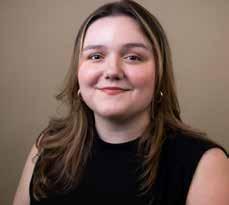
we go into a school, it is probably the first time those students have listened to a professional singer in the same room as them. Maybe, it’s the first time they have heard singing that was not on a radio. It used to be that everyone sang; it was part of everyday life. Our education programs encourage these students to learn to make music themselves. Through our programs, they may decide they want to be a music teacher, a performer, or a dedicated consumer of live music. Our high-school program, PCI, is one of the great moments of every year for me. We get some of the best high school singers for a week and watch them magically transform. It’s amazing to see their excitement and watch them take the next step in their lives. The spectacular 70-voice choir that mixes student voices with Seraphic Fire is absolutely an unforgettable music experience for everyone involved.

Season by the Numbers
Our Donors
FOR DONATIONS BETWEEN JUNE 2024 AND AUGUST 2025
Legacy Society
Anonymous
Malcolm Bosma
Blaine Branchik & Christopher Rudman
Dr. Clinton Bush
Suzanne Floyd
Patti & Dennis Klein
Marilyn A. Moore
Dr. Audrey Ross
Ruth† & Marvin† Sackner
Cliff Whittle & Scott Cumming
Tom Worrell
Founder’s Circle: $50,000+
Anonymous
The Clinton Family Fund
The Dunspaugh-Dalton Foundation §
The Hutson-Wiley Echevarria Foundation §
Miami-Dade County Department of Cultural Affairs §
The Sayre Family Charitable Fund § Barbara & Mel VanderBrug †
National Sponsor: $20,000-$49,999
Robert R. Brinker & Nancy S. Fleischman
Community Foundation of Broward
Nirupa Chaudhari & Steve Roper
Meredyth Anne Dasburg Foundation
Marty Davis & Alix Ritchie
Jane Hurt, in honor of Suzanne Floyd §
The Kirk Foundation §
Ana & Raul Marmol
Miami-Dade County Youth Arts Enrichment Program §
Quest Foundation §
Robert Warren
Wayne & Lucretia Weiner
Underwriter $10,000-$19,999
The Adrienne Arsht Center for the Performing Arts §
Kristina Bettendorf
Judy Brinker
Broward County Cultural Division
Bruce & Martha Clinton
Harry F. Duncan Foundation §
Funding Arts Broward §
Funding Arts Network
Martha Rogers Haas & Pamela Poulous
Diana Hammerstein
Marilyn & Bernie Horowitz
Joe & Suzy Lacher
John J. Martin, M.D.
Miami-Dade County Tourist Development Council
Peacock Foundation, Inc. §
Edmundo Pérez-de Cobos
Margaret A. Rolando
Peter & Sara Rutenberg
Susan & Karl Shell
Leonard Smith §
Deborah & Michael Troner
The William Jaume Charitable Fund at Our Fund
Allan Yudacufski & Mark Mandel §
Maestro Circle: $5,000-$9,999
Bonnie Blomberg
Robert Braunstein §
A. Peter Burleigh
Anne Carlucci
City of Coral Gables
Clive Daniel
Collier County Tourist Development Council
Billie Hairston §
Daniel Perron & Jonathan Hogg
Megan Kelly
Priscilla & Steve Kutler
Lyza Latham
Charles L. Marshall, Jr. & Richard L. Tooke
Cathie-Ellen McCallum
Miami Beach Cultural Arts Council
Marilyn & George Moore
Diane Rahman
Patty Stonesifer & Mike Kinsley
Robin Woodard
Solomon Family Foundation
Williamson Cadillac-Buick-GMC
Cathy VanderBrug
Sponsor: $2,500-$4,999
Anonymous
Ronnie Arad
Bill Bonn & Ruben Ceballos
Dr. Clinton Bush
Coral Gables Community Foundation
Gerhard Dahl & Araceli Pina
Do Unto Others Trust
Enterprise Mobility Foundation™, on behalf of Laura Compton §
Bud & Maria Farrey
Suzanne Floyd §
David Foerster, in honor of Danny Yanez
Mary Beth & Gerry Garcia
Janus & Pedro Greer
Susie & George O. Knapp III
Dr. Brian Levey & Jonathan James Flores
Scott Macdonough §
Ron & Wendy Palmer, in honor of Mel & Barbara VanderBrug
Frank & Susan Salinger Cultural Initiative
Maeve Anne Sandiford
JJ Schmidt
Alice & Joe Smith
Kim Thompson & Luis Ramirez
Nina Webber
Fred & Maria Jose Wright
Gregg Zavodny
Patron: $1,000-$2,499
Betty & Marcelo Alvarez
Diane Ashley
Daniel Ayers & Tony Seguino §
Alvaro & Misty Bermudez
Margrit & Roger Bernstein
Alexander Blasenheim
Sylvia Blau & Samuel Kenner
Bruce Bolton
Patricia & Jean-Jacques Bona
Michele & Robert Chastain
Katie Conley & James Glick
Joan Conroy
Dickie Davis
Augie Diaz
Marcy & Richard Dupere
Cecile M. Erlsten
Sue Fiorey & George Chesney
Firestone Family Foundation
Alaina Fotiu-Wojtowicz
Susan Fuhrman
Joan & Paul Gluck
Ann Goodman
Maureen & Lawrence Gragg
Luz Maria & Alfredo Gutierrez
Jeffrey Hamblin
Harold Hickey
Mac & Diana Hooton
Bruce Jackson
Cathy & Evan Jones
Carin Kahgan
Donald L Keith Charitable Fund
Tina Lane
Richard Mahfood
Nancy Malecek
Margaret & Serge Martin
Donna Mellender
Emma Mellinger
Lois & Gene Miller
Nadine & Dan Moore
Leila Morris & Richard Boswell
Art Murphy
Kathleen Newell
Carter Parsley
Antoinette & Vince Pelc
Mary Ellen & Michael Peyton
William Quigley
Thomas Ragan
Audrey Ross
Bill Roy & Susan Kelley
Bronwen Rutter
Jane Robinson
Joanne & John Schulte §
Beatriz & Sam Shaw
Benjamin Sherman
Sandi Simon
Joe Leigh Simpson
John Stansell & Michael Pellegrino
Lynne Steinfurth
Lou Strennen
Szilagyi Family Foundation
Mark A. Trowbridge†
Jim E. Utts
Karen Fuller Veloz
M. Therese Vento & Peter M. MacNamera
Joaquín Viñas & Teresa Galang-Viñas
Kirsten Wood & Tom Leness
Dean Ziff
Barbara Zwick
Sustainer: $500-$999
Anonymous
Claire Angelozzi
Education Donor † deceased
Malcolm C. Bosma
Kay Casstevens, in honor of Patrick Quigley
Sylvia & John Czarnetzky
Glenn E. Devitt
Bonnie & Peter Dockter
Janette & Francis Engelhardt
Sid Forman
Nancy Gillespie & Ulrich Lachler
Joan Glade de Pontet
Steven Grupe
Huberta Hacket
Deborah Hoffman
Joanne & Maria Jasin
Nancy & James Katzoff
Veronica Lopez-Lopez
Leonardo & Kim Lopez
Sarah Lopez-Luis
Bernard G. Perron
Donna & Sam Pesin
Nicholas Pisaris
Jeanne Ann Rigl
Rosmarie Schadae
Jim Sirbaugh
Peggy Stanley
Jeff & Pam Stenbeck
Michael Wascom
Jocelyn Watkins
Priscilla Felisky Whitehead
Tom Worrell
Donor: $250-$499
Marjorie Adler
Nancy Ameglio
Ruth & Victor Balestra
Become a Volunteer
Seraphic Fire is looking for you! Help us create a memorable experience for our concertgoers and patrons by volunteering at one of our concerts! Volunteers receive complimentary admission to the show they usher. Please send an email to Info@SeraphicFire.org to sign up.
Paul Bernabeo & David Cohen
Michael Carpenter
Nelson Charlie
Steve Gilbreath
Guerrero
Nancy Halula §
Suzanne Hatcher Isbell
David & Sally Jackson
Gloria Kline †
Lauren & Scott Schiffer Leger
Carmen Letelier & Richard Lilley
Catherine Lynn
Nancy MacColl
James Marks
Joan & Finlay Matheson
Susan & Fred Mattes
Joanne & John Meagher
Sarah & Gordon M. Melcher
Linda Morgan
Sandra Mullen
Willam P. Murphy
Nicholas Netos
Patricia Phares
Nicolene & Stephen Polyak §
Brenda Richey
Emily & Louis Rossiter
Acacia & Corbin Shouse
Mike Simons, in honor of Renee Hemsing
Robert Smith
Katy Tabb & Matthew Kacergis
Dan Topp & David Cole
Lyndall Urquhart
Doris & Adam Wanner
Ruth & Michael Wiegand
Henry Zarb
Become a Seraphic Fire Artist Host
Another valuable way to contribute to Seraphic Fire is by becoming a host! If you are interested, please email Andrea@SeraphicFire.org to receive our application, and we will notify you if we have a match. Hosts will receive a tax acknowledgment for their contribution at the end of the calendar year.
Board/Administration
ADMINISTRATION
Executive
Patrick Dupre Quigley, Artistic Director
Danny M. Yanez, Executive Director
Artistic
Andrea Leon-Moreno, Artistic Operations Manager
Alexis Aimé, Artist Contractor
Finance & Operations
JJ Flores, Director of Finance and Operations
Rachel Wresh, Administrative Operations Associate
Advancement
Olivia Pidi Weiss, Grants Manager
Sofia Vidali, Advancement Associate
Kerren Dieuveille, Box Office and Patron Services Associate
Isabella Kupferschmied, Patron Relations Coordinator
Education
Suzanne Floyd, Director of Education
Alexandra Colaizzi, Education Coordinator
Cristina Morales, Choral Education Liaison
BOARD
OF DIRECTORS
Diane Ashley, Chair
Joanne N. Schulte, Founding Chair
Robert “Bob” Brinker, Treasurer
Misty Bermudez, Secretary
Nirupa Chaudhari
David Foerster
Marilyn Horowitz
Megan Kelly
Ana Marmol
John Martin
Daniel Perron
Elizabeth Rader
Margaret “Peggy” Rolando
Mel VanderBrug †
Eric Winn
Gregg Zavodny
Edmundo Pérez-de Cobos, Director Emeritus
Patrick Dupre Quigley, Artistic Director, ex-officio
Danny M. Yanez, Executive Director, ex-officio
Alexandra Colaizzi, Artist Representative, ex-officio
John Buffett, Artist Representative, ex-officio
Will You Consider a Gift to Seraphic Fire?
Your support makes it possible for Seraphic Fire to present more than 40 performances annually for an audience of 7,000 throughout South Florida and nationally. Your donation further supports a robust series of education programs serving over 3,500 K-12 public school students annually, in addition to professional training programs in partnership with leading universities.
Now more than ever we need your help. This year, arts funding from the State of Florida was cut entirely. Last year we received a $97,000 general operating grant and this year, through a competitive grant process, Seraphic Fire’s application for support was ranked 18 out of 630 total applicants with a recommended award of $150,000. The governor’s veto zeroed that amount out, leaving us with a significant and abrupt budget gap. We know that investing in the arts creates a meaningful return to the local economy, tax revenue, and quality of life.
Learn more about donor levels and benefits, and make your gift online by visiting SeraphicFire.org/Support or by scanning the QR code.
To mail a check, please send it to:
Seraphic Fire, 2153 Coral Way, Suite 401, Miami, FL 33145
Order Your Tıckets Today!
Single Tickets
Purchase individual tickets to specific concert dates. A limited number of reserved seats in our Gold and Silver sections are available.
Subscription Packages
Subscribe to get the best value and priority for reserved seating tickets along with special benefits.
Upgrade to Platinum Seating
Donors of $1,250 or more unlock best-in-house assigned seats in the Platinum section. If you have made a $1,250 donation since 6/1/2025, you will be automatically upgraded to Platinum Seating.
Secure Your Seats Today


Seraphic Fire recognizes its Founder’s Circle sponsors, national sponsors, and institutional partners.
FOUNDER’S CIRCLE SPONSORS
Anonymous
Barbara & Mel VanderBrug †



NATIONAL SPONSORS
Robert R. Brinker & Nancy S. Fleischman
Nirupa Chaudhari & Steve Roper
Meredyth Anne Dasburg Foundation
Martha R. Davis & Alix Ritchie






Jane Hurt
Leonard Smith
Wayne & Lucretia Weiner











Seraphic Fire is sponsored by the Miami-Dade County Tourist Development Council, Miami-Dade County Department of Cultural Affairs and the Cultural Affairs Council, the Miami-Dade County Mayor and Board of County Commissioners; City of Miami Beach Cultural Affairs Program, Cultural Arts Council, and the Miami Beach Mayor and City Commissioners; the City of Coral Gables; Coral Gables Community Foundation; The Dunspaugh-Dalton Foundation; Hutson-Wiley Echevarria Foundation; Funding Arts Network; Funding Arts Broward; The Kirk Foundation; Peacock Foundation, Inc; Quest Foundation. Seraphic Fire is funded by The Children’s Trust. The Trust is a dedicated source of revenue established by voter referendum
improve
lives of children and families in Miami-Dade County by making strategic investments in their future. Programs in Broward County are made possible with the support of the Broward County Cultural Division. Support has been provided by the following Funds at the Community Foundation of Broward: Marlene Holder Fund for Broward, Barbara and Michael G. Landry Fund for Broward, Dorothy Osterhoudt Unrestricted Fund for Broward, and The Frederick A. DeLuca Foundation Broward Community Fund.
